











Easy to Tow, Ready to Work.
The Portable Arrowlock 75 Series sets up fast with no heavy panels—just one compact unit that unfolds easily for your toughest days.
























The Portable Arrowlock 75 Series sets up fast with no heavy panels—just one compact unit that unfolds easily for your toughest days.















My wife is tougher than I am. Plain and simple. Every morning that the roads are not snow-covered and temperatures are not single digits, while I am tucked in my warm bed, Cassie is out running for an hour. I tell myself that I choose not to get my cardio that way because I am simply too tall and heavy for that to be practical. “It is bad for my joints at my size,” I tell myself. I add that I am out in the cold for 50+ hours a week a lot of the year. I don’t need to get zapped by the cold before my day even starts. In reality, all it takes is a pair of shoes and clothes I already own to get what I need for my day, and I don’t do it. There is no drive to the gym, and it is the quickest workout a parent of a one-year-old can get. The fact she does it in this weather, and I don’t, tells me that if our son lacks mental fortitude, it came from my side, not hers.
I am so opposed to running in the cold that I made an investment that saves me a drive to the gym the three days a week I need to elevate my heart rate for a cardio workout. I bought a rowing machine. It saves me three trips to Bowling Green a week, stores vertically in a compact manner in the laundry room, and most importantly, gives me an extra few hours of sleep on that commute time to Bowling Green for said workout. Admittedly, though, it is pretty dull to spend an hour on that thing at my house. As a result, I unpack it in front of a TV at 5:00 am and seek out something mindless yet engaging simultaneously. I have found that I end up on many YouTube videos that show natural beauty, such as nature documentaries and outdoor documentaries. The Red Bull channel and National Geographic National Park series get a lot of play in the predawn hours. I have learned one thing through my subtitled viewing from a rower seat. I am jealous of how uniform the Jackson elk herd that roams Teton National Park is.
I am not kidding. You could take the fanciest set of bred heifers you can imagine and they don’t hold a candle to those how sweet those elk cows looked in the fall of the year in that documentary. I see why those bull elk fight to the death over them. Now, I am far from a “run them like they are in nature” proponent when it comes to commercial beef production. Nothing in the genetic selection in nature says the animal has to breed at 15 months, calve at 24, and do it on a 365-day interval for 1215 years to contribute to the gene pool. In our own population

of cattle, we have to set the resources and parameters and select those that can do it. However, the 11,000-year-old Jackson elk herd’s parameters are to fit the environmental resources and survive. There have been more generations of selection in that population for environmental adaptability to resources and survivability to predation than I care to calculate. Those parameters set in nature have said this is precisely what an elk in this part of the world needs to look like to contribute to the gene pool. She has to breed a window where her calf can survive the elements it is born into. She has to be structurally sound to both migrate and escape predation. The bulls must be aggressive breeders and durable, or they will be unable to fight off competitors and live to breed afterward. I know nothing about elk udders, but something tells me a calf isn’t born with significant vigor, and to a cow with an udder that is easy to latch on to, it is almost certainly a grizzly snack. Without a doubt, the progressive cattlemen of today know far more about how to select genetics for profitable commercial beef production than what would happen if left to nature. We can learn a thing or two from this elk herd, though. Genetics must be continually selected in an environment if we expect them to work. One or two generations won’t cut it. We can’t import cattle to fescue country that have never seen it and blindly expect them to work at a high rate. We can’t take a bull from a cow herd that is calved in a barn and bred at a silage bunk and expect them to automatically produce when thrown out in the elements and expected to breed on rough pasture. There is something to be said for generation after generation after generation of selection pressure for a narrow set of expectations. Only once they meet the baseline narrow expectations we have set for them can we push the envelope regarding additional traits. We need to get out of the way and let our cattle tell us who does the best job given the parameters we have set. While my cattle aren’t chased by bears or spend the year migrating over vast expanses of the American West, there are certain things I need them to be able to do. We must let them tell us a little more than we tell them. In beef production, they speak to us through the data.
- Joe K. Lowe II
OFFICERS:
President
RANDY WARNER Sharpsburg
President Elect
ALLAN BRYANT Eminence
Vice President
DANIEL HAYDEN Whitesville
Treasurer
KEN ADAMS Upton
Past President
JEFF PETTIT Sebree
KCA Program Chairman
ADAM CHUNGLO Harrodsburg
KBC Chairman
RYAN MILLER Lebanon
KBN Chairman*
ALLAN BRYANT
Beef Solutions Chairman*
DANIEL HAYDEN *ex officio
REGION 1
Wayne Zoglmann, John Mark Brown, Dale Gold, Greg Roberson, Gary Woodall, Coleman Ladd, Susan Zoglmann, Bill Plemmons, Kenton Howard, Steve Dunning, Conner Williams
REGION 2
Phyllis Gentry, Joe Lowe, Allison Nissley, Rayetta Boone, Robbie Hatfield, Chris Imbruglio, Maggie Webb, Andy Joe Moore, Adam Thomas, AJ Mitchell, Isaac Thompson, Kenneth Green, Trent Jones, Josh Morris, Joe Mike Moore, Amy Cecil
REGION 3
Amanda Hall, Nathan Lawson, Allen Phillips, Irvin Kupper, John David Yount, Lincoln Clifford, Abbey Biddle, Ben Tinsley, Crystal Harrod, Kyle Bush, Michelle Simon, Craig Retzlaff
REGION 4
Amy White, Brad Reynolds, Chad Anglin, Phillip Stamm, Danielle Harmon, Brandy Graves, Jodi Purvis, Mike Ravencraft, Ronnie Lowe, Logan Carter, Jason Crowe, Rob Amburgey
REGION 5
Phillip Reese, John Settles, Natalie Wesley, Doris Hamilton, Freddy Harris, Brent Williams, Anne Bays, Tommy Glasscock, Josh Wethington, Arch Sebastian, Terry Mattingly
Executive Committee members in
Five $1,500 Scholarships are available through the Kentucky Cattlemen's Association and are funded by the Kentucky Cattlemen's Foundation.
Requirements:
• Must be a graduate from a Kentucky public, private, charter, or homeschool in the year of the application
• Must be enrolled and attending an institute of higher education following graduation
• Must be planning to major in agriculture or an agriculturally-related subject
• Applicant or their parent/guardian must be an active member of the Kentucky Cattlemen's Association
Applications for the 2025 KCF Youth Scholarships should be submitted by March 31, 2025.
For more information contact Bradon Burks at the KCA office at 859-278-0899 or visit kycattle.org/youth-scholarship

Kelly
of Communications
Todd Brown Graphic Designer
Bradon Burks KBC Director of Education
Rachel Cain Membership and Communications Coordinator
Amelia Carter KBC Director of Industry Relations
Danny Coy Video Production Specialist
Jake Harrod KBN Program Coordinator
Dan Miller KBN Industry Coordinator
Debby Nichols National Advertising Sales, LAN
Katie Pratt Communications Manager
Alex Scott MS, RD, LD KBC Southeast Regional Director of Nutrition
Becky Thompson Director of Kentucky Beef Network
Kelly Tucker KCA Collections & Compliance
Nikki Whitaker Director of Operations & Policy

Randy Warner KCA President
Well spring is finally here, and I for one am so glad that winter is finally over. This past winter was a rough one in every aspect with cold, snow and freezing temperatures along with rain and mud. But whatever Mother Nature had in store for us, we overcame.
As cattlemen, it’s part of our nature to take what comes at us. We keep going knowing every day is a new challenge and we will persevere.
It’s that attitude that makes me so happy to represent an organization that is made up with people who take what is thrown their way and adapt and do things the right way so everyone benefits.
In last month’s letter, I touched on the NCBA convention and the things you learn there. This year was no different as the CattleFax symposium was chocked full of information regarding markets and the weather. It usually pans out to be spot on. This year, they talked about how the next couple years the cow-calf producer should be in the driver’s seat, barring any unforeseen events. They also showed the long-range weather maps, and we, in the state of Kentucky, should have a typical pattern of rain when we need it and normal temperatures.
The Oversight Committee has chosen our architect for the Livestock Innovation Center. We chose Sherman Carter Barnhart to team up with Branscum Construction to design and build the center. I personally think we have a powerhouse team to design and build our innovation center that all of the state will be extremely proud of when it is completed. As a small-time producer from Sharpsburg, this whole process has been an incredible experience for me to work on and participate in as we chose how we go forward with our plans.
I will be the first to tell you there is a lot more that goes into getting a building built than moving dirt and putting up walls. In the end, I believe everyone will be as excited about this state-of-the-art center as I am.
One thing about April around here is how amazing it is that with a little sunshine how soon everything pops out of the ground and branches. It makes a totally different smell than at any other time of the year, and boy isn’t it beautiful?! Along with all the new babies running around, it does give time for reflection on all the work you have put in is finally coming to fruition. It only could be here in Kentucky because I know of no other place that is nearly as beautiful and that makes me proud to be a Kentuckian. Until next month, I hope you stay safe and healthy and God Bless.



Our secret ingredient? The hardworking farm families across the Bluegrass state proudly raising beef for you and your families to enjoy. When you buy Kentucky Cattlemen's Ground Beef you can feel confident in purchasing a great tasting product, while supporting local Kentucky communities www.kentuckycattlemensbeef.com

Jonathan Shell Agriculture Commissioner
In Kentucky, beef is more than just a staple of the dinner table – it's a cornerstone of the state's economy and a way of life for thousands of farm families across the commonwealth. Kentucky is home to the most beef cattle east of the Mississippi River and ranks eighth in the nation for beef cattle production. So, when a parting salvo from the outgoing Biden-Harris administration threatens to undermine this vital industry with new dietary recommendations, Kentucky Attorney General Russell Coleman and I are forced to take a stand.
The federal government releases updated “Dietary Guidelines for Americans” every five years. These guidelines influence the way nutrition is taught and the food industry operates and have a direct impact on what consumers are encouraged to eat. In the latest round of updates, a committee appointed by the former administration proposed that plant-based foods, including beans, peas and lentils, should be the primary sources of protein. Meanwhile, meat, poultry and eggs were relegated to the bottom of the list.
This shift in dietary advice is more than just a change in recommendations – it has profound economic implications, particularly for Kentucky agriculture. Attorney General Coleman and I, in a joint effort with a coalition of 23 other
state attorneys general, sent letters to both the U.S. Department of Health and Human Services and the U.S. Department of Agriculture, voicing our objection to these proposed guidelines. Our message? It’s time for a balanced approach that considers the science of nutrition and the economic realities of American farming communities that depend on meat production.
The benefits of animal-based proteins, like beef, are well-documented. Beef is unmatched in terms of protein per calorie, and sufficient protein intake is essential for proper childhood development, combating anemia, and building and maintaining muscle. By pushing plantbased proteins ahead of meat, poultry and eggs, the guidelines ignore the nutritional benefits of animal products and the science behind them.
Beyond the science, there’s a deeper issue at play – the livelihoods of Kentucky’s farmers. Agriculture, especially beef cattle farming, is vital to many of our rural communities here in the commonwealth. By shifting the focus away from meat consumption, the guidelines could have a lasting economic impact on those who depend on beef cattle as their primary source of income. It’s not just about what’s on the dinner plate; it’s about the economic stability of Kentucky farm families who produce these products and
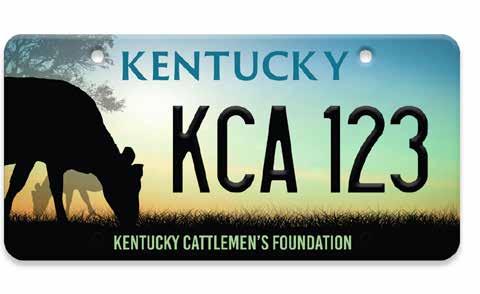
our rural communities that rely on them. Kentucky’s beef industry doesn’t just contribute to the state’s economy – it is part of the state’s identity. For many Kentuckians, it’s a way of life. These families are not only producing food –they’re helping to sustain the culture of rural Kentucky. To ignore this is to ignore the role of local agriculture in feeding America and supporting rural economies. My opposition to the proposed guidelines is also a call for fairness and respect for the consumer’s right to choose their food. The guidelines should reflect a balanced, science-based approach that allows families to enjoy a variety of protein sources, whether they come from plantbased foods or animal-based products. The fight against these politically motivated guidelines is not just about protecting the interests of farmers; it’s about protecting the freedom of all families to enjoy the foods they love. By standing up for Kentucky’s beef farmers, we are standing up for consumers, rural economies and the freedom to make informed dietary choices. The voices of Kentucky’s farm families deserve to be heard, and it’s crucial that dietary guidelines support both their livelihoods and their customers’ rights to choose healthy, well-balanced meals.
KCA license plate NOW AVAILABLE at your local county clerk's office!
Kentucky Cattlemen's Foundation will receive $10 from each purchase and renewal to benefit education, leadership and youth programs.

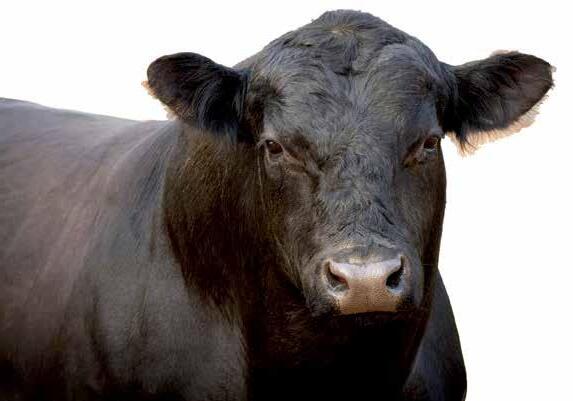
6:00 PM • April 19, 2025
One of the longest running ANGUS Sales of its kind – Quality Genetics from Top Programs! Spring Cow/Calf Pairs H Fall Cow/Calf Pairs H Fall Bred Heifers
Yearling Replacement Heifers H Breeding Age Bulls H Elite Embryo Packages
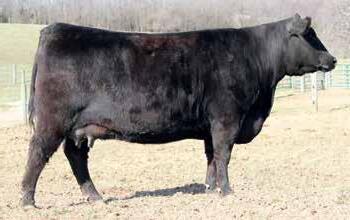



This productive young DB Iconic daughter sells as one of the top spring cow/calf pairs in the offering with a heifer calf at side!

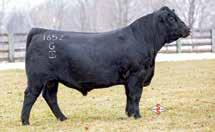





Dave Maples Executive Vice President
I remember really well the night my grandmother came to our house to spend the night with me, my sister and little brother while mom and dad were gone on a trip some 60 years ago. We were young. My siblings were maybe 3, 4, and I was 6. My grandmother lived in town and owned a grocery store. As kids, we always looked forward to going to town and to have a grandmother that owned a store was absolutely awesome. Her store had a really nice meat department. To say the least, my sister and brother and especially me were spoiled. To have free range to the candy counter was a treat. You see, we lived in the country and didn’t get to town that often. You know as I think about it, I really don’t remember my grandmother visiting our house very many times, but again, she was in the store six days a week. Or it could be because of that one overnight visit to our house. When I think back about that night, it was just a normal night for us, nothing out of the ordinary. I went to bed as normal, had a good night’s sleep and was ready to go the next morning. But when I saw my grandmother and the questions that she was asking, I knew she didn’t sleep as well. You see, we had chickens who were free range or “yard chickens,” and one hen slept on the window air conditioner that was in the bedroom window where my grandmother slept. I guess the hen scratched on the metal air conditioner all night and scared my grandmother. She thought someone was trying to break in the house. Then, the rooster let her know that it was daylight and time to get up. Also, we had weaned about 30 calves a day or two before, and they were still bawling. The pigs bothered her the most. We had about 150 feeder pigs across the road, and yes, they were on dirt. Their metal feeders had the lids that would bang close when they pulled their head out. That kept her up all night. To say the least, my grandmother went back to town and said that was the loudest place she had ever been. She never came back.
Her experience of babysitting in the country has been a longtime story in our family.
As I was thinking about this story, I remember that we also had five dairy cows on the farm as well. Seven families lived on the farm, including my family. All the families either worked on the farm or had sharecropping agreements with dad.
Today, the farm looks much different. All the farm houses are gone except the original home where we lived. My brother lives in that house today. Mom and dad built a new house in the 70’s. There are no pigs, no dairy cows, but we still have about 30,000 hens. The cattle operation and all the row crop acres are rented out to one farmer. On top of that, my grandmother’s store is closed in town. The building is vacant and just a memory in the older neighbor’s mind.
I tell this story to remind me and the ones that read this column that things change. The food supply system has changed. The cattle industry has changed and will continue to change. I was reading an article in Drovers the other day. The article was titled, “A Review of Feedlot Structure and 2024 Marketings.” To get to the point, there were 24,000 feedlots with less than 1,000 head capacity last year, and they marketed 12.8% of the cattle sold. There were 80 feedlots with greater than 50,000 head that marketed 35.1% of the cattle. When you combine the 65 feedlots with 32,000 to 49,000 head capacity you have 50.9 % of the fed cattle coming from 145 feedyards. You will see more change in the beef industry. You could very easily see a 50,000-head feedyard in the eastern U.S., maybe even Kentucky. If it does come to fruition, it will be because of efficiency, labor, capital and the consumers’ desire to have a consistent, tasty and safe product.




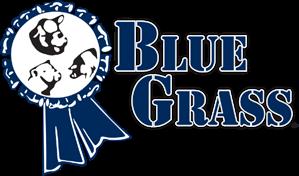
Belles & Bulls of the Bluegrass—Saturday, April 5
Hudson Bluegrass Longhorns Sale Friday, April 11 & Saturday, April 12
Clifford Farms & Guests Production Sale—Saturday, April 19
KHA Certified Hereford Influenced Feeder Sale Monday, May 19 Profit Thru Performance Feeder Sale—Monday, June 2
South Traditions Hereford Influence Spring Feeder Calf Sale—May, 8 The Charolais Influenced Feeder Calf Alliance—May, 15
submitted by Randy Warner
Bath County held their first meeting of 2025 on Feb. 18 on a very cold night.
Rips Farm Supply sponsored the meeting and talked about all the services they offer. President Charles Curtis chaired the meeting and State President Randy Warner gave an update on what he learned at CattleCon 25 in San Antonio. Members enjoyed a delicious steak meal prepared by our officers.

submitted by Arch Sebastian
Members of the Mountain Cattlemen’s Association hosted a free burger lunch featuring Kentucky Cattlemen’s Ground Beef for Eastern Kentucky flood relief workers, Thursday, Feb. 20 at the Hazard Disaster Relief Center. Thanks to support from Appalachian Regional Healthcare (ARH) and the local cattlemen’s group, 250 first responders and volunteers received a free hot meal.
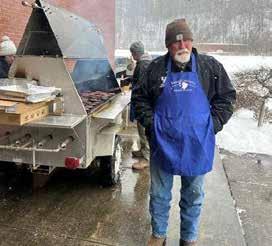
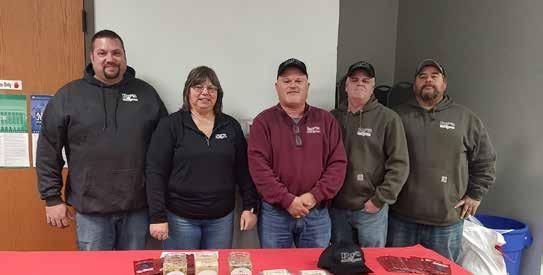





submitted by John Walpole and Sadie Violette
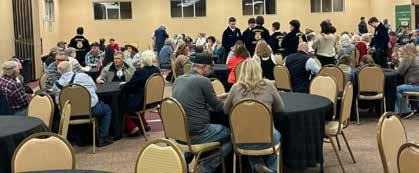
The Logan County Cattlemen’s Association hosted their first quarterly meeting of 2025 March 7 with around 170 members in attendance.
Attendees watched as members of the Logan County High School FFA Parliamentary Procedure Team conducted a practice meeting for their group. The team includes FFA officers Jaynes Campbell, Vincent Eaton, Jonas Hayes, Alex Weaver, Tanner Cash, Tatum Grice and Ellie Celsor. They are champions of the Barren River Region and will compete at the state tournament in June. They are advised by Jay Campbell and Wesley Estes. Farm Credit sponsored of the meeting.
submitted by Ken Wininger
The February meeting of the Barren County Cattlemen’s Association was FFA Cattlemen’s Night. During the evening, members of the Barren County High School FFA chapter presented their projects they had been working on for the year. More than 200 people were in attendance, which included cattlemen’s members, FFA students and their parents. ProSolutions of Hiseville sponsored the meeting. The group photo includes advisors and members of the Barren County FFA and representatives of ProSolutions..

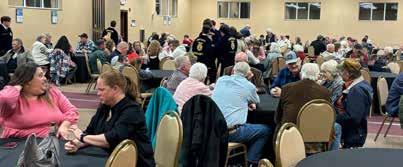
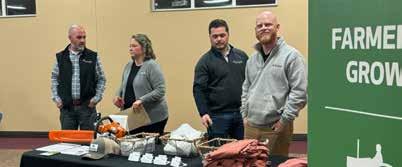
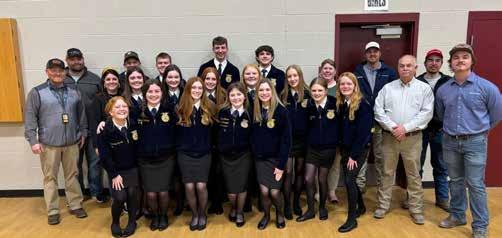
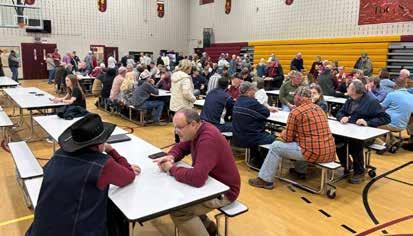
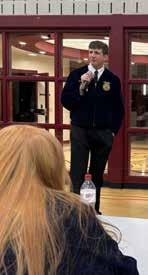


Katie Pratt Kentucky Cattlemen's Association
LEXINGTON, KY− Not many people can trace their heritage and the lineage of their herd back to one location since the 1790s, but that’s the case for the van Nagell family, the owners of Brookfield Farm in Lexington.
Keeping those deep roots on the Fayette-Clark County line is the goal of Dr. Jack van Nagell and his daughter Knox van Nagell Pfister, who are the sixth and seventh generations on the farm. They can trace the farm’s ownership through the family of the late Betsy Gay van Nagell, Dr. van Nagell’s wife and Pfister’s mother.
Not only do they want to preserve the farm for future generations but they are focused on producing a highquality herd.
“We want to have an efficient farm with optimal management practices and keep the farm in great condition,” van Nagell said. “We want people to look at it and say ‘That’s a well-run farm.”
Located on 1500 acres, Brookfield Farm has specialized in Black Baldy production since the early 1990s. Prior to the 1990s, the farm produced purebred Herefords and at one time, had the largest herd of Hereford cattle east of the Mississippi River. Pfister’s grandfather Doug Gay served as president of the American Hereford Association in 1953-1954.
Today, the Hereford-influenced cattle on the farm have a direct lineage to purebred Hereford cattle that were driven over the Appalachian Mountains from Virginia by a Gay descendent in a 1790 who had a landgrant from British royalty.
“We were selling horned Hereford bulls but mainly out West,” van Nagell said. “The markets here were declining. So, we decided to change the farm from a purebred Horned Hereford operation to a commercial Black Baldy operation.”
Switching to Black Baldies
Ben Roberts, the farm’s manager in the 1990s, began artificially inseminating the herd with Angus genetics. Van Nagell said some of their goals are producing animals with manageable birth weights, rapid rates of gain and low predispositions to diseases like pinkeye. They also breed for docility, uniformity and look for heifers that will make good moms.
Today, farm manager Anthony Hudson and herdsmen Adam Whipple and Jose Cobos-Reyes run the farm’s day-to-day operations and manage the 500 head of mama cows.
“Ben Roberts and Anthony should receive a tremendous amount of credit for the advances that the herd has made,” van Nagell said.
The entire herd is spring-calving. Since 1991, the farm has retained its own heifers with around 125
returning to the herd each year. In addition to AI, the farm keeps around 10 clean-up bulls to improve pregnancy rates. The cow herd has a 93% conception rate, and heifers have a 90% conception rate.
In 2024, the farm’s herd had an average daily gain of 4.3 pounds. Hudson said most years the herd averages between 3 and 5 pounds on daily gain.
“2024 was a good year for us,” Hudson said.
The farm produces 110 acres of corn silage for winter feeding for its entire herd. While farm will also harvest its own hay, the silage helps reduce the amount of hay the herd requires and helps boost average daily gain.
Van Nagell said while its nice to have metrics for comparison, they are not the farm’s entire focus. Their goal is quality cattle.
“It’s probably the best set of crossbred cows that I know of,” said Ron Shrout, Kentucky Beef Network field associate who has worked with the farm for a number of years.
Bob Rose of Clark County has a stocker operation on a neighboring farm. While he has admired Brookfield and its cattle since the 1950s, he’s been buying steers from the farm for the past five years.










CONTINUED FROM PAGE 14
“You can just look at them and know that they are top-of-the-line cattle,” he said. “They always do great. I don’t have any sickness from them, and they gain better than anything I’ve ever had.”
Producing healthy cattle is one of the farms goals. To keep sickness to a minimum, Hudson and his team have a strict vaccine regimen in place for the herd that includes alternating wormers to reduce resistance.
With ties so deep to the land, preservation has been a focus of the current generations. The farm is
located only a few miles away from Lexington’s Hamburg Pavilion and as with many areas of the state, development pressure is a concern for the family.
“We think it’s a beautiful farm, really one-of-a-kind,” van Nagell said.
The family is also concerned about preserving the farm’s unique environment and ecosystem. It is located in the Boone Creek Watershed, with one of the creek’s headwaters starting on the farm and several of the creek’s tributaries running through the farm. Boone Creek has been designated a rural historic district and was placed on
the National Register of Historical Places in 1994. The area is known for its agricultural practices, stone fences and barns.
“The land has been so good to us,” said Knox van Nagell Pfister. “It’s some of the best farmland and soils in the world that can raise some of the best cattle around, and we want to be good stewards of it.”
To make sure the farm stays in agriculture and its ecosystem stays intact, Betsy and Jack van Nagell placed much of the farm in conservation easements. While they began putting acres into conservation programs when they moved to the farm in 1986, they placed a large portion of the farm into a conservation easement in 2000. Today, around 950 acres of the farm is in a conservation easement. The easements are held by the Bluegrass Land Conservancy and the LexingtonFayette Urban County Government’s Purchase of Development Rights, or PDR.
Van Nagell Pfister grew up on the farm and developed a strong commitment to the land and agriculture through her mother. She hopes to instill the same commitment to her children.

“Many generations of my family have worked hard to make the farm special,” Pfister said. “It’s a link to our past but also a promise for our future.”
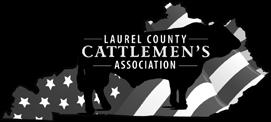








WASHINGTON, D.C., (Feb. 26, 2025) – Today, Nebraska cattle producer and National Cattlemen’s Beef Association (NCBA) President Buck Wehrbein testified before the U.S. Senate Committee on Agriculture, Nutrition, and Forestry to share an update on policy priorities for the American cattle industry.
“The cattle industry is seeing better market conditions, strong consumer demand for beef, and optimism for the future of our industry yet challenges still remain,” said Wehrbein. “Congress must always remember that food security is national security and the policy decisions they make will impact the hardworking cattlemen and women who produce our nation’s food. Passing a Farm Bill, axing the Death Tax, protecting beef in the Dietary Guidelines, rolling back excessive regulations, holding our trade partners accountable, combatting the New World screwworm, and protecting the Beef Checkoff are all tangible steps Congress can take to support American farmers and ranchers and protect our food security.”
In his testimony, Wehrbein urged Congress to pass a Farm Bill that supports animal health, voluntary conservation and risk management tools. He also explained the importance of the Beef Checkoff program, which strengthens beef demand, educates consumers and funds critical research. The Beef Checkoff has faced renewed attacks from radical animal rights activists, and Wehrbein urged Congress to stand with real farmers and ranchers instead of activists.
Additionally, Wehrbein asked Congress to protect the cattle industry from the new threat of New World screwworm by investing in sterile fly production facilities that will help eradicate the screwworm.
The U.S. has been free of New World screwworms for over 60 years, but the pest is currently in Mexico and could move north. Wehrbein also addressed the importance of passing legislation to lower taxes and eliminate the Death Tax, protecting beef in the Dietary Guidelines for Americans, supporting public lands ranching and reducing overregulation on American cattle producers.
WASHINGTON, D.C., (March 3, 2025) – Today, the National Cattlemen’s Beef Association (NCBA) thanked President Donald Trump and U.S. Treasury Secretary Scott Bessent for suspending enforcement of the Corporate Transparency Act (CTA) and limiting the scope of the law to protect family farms and ranches from excessive regulations.
“Family farmers and ranchers across the country are breathing a sigh of relief thanks to President Trump and Secretary Bessent suspending the Corporate Transparency Act reporting requirements for American citizens,” said NCBA President Buck Wehrbein, a Nebraska cattleman. “We appreciate President Trump’s common-sense approach and continued support for rural America and the hard-working cattle producers who feed our nation.”
For months, the CTA reporting requirements have been subject to litigation, temporary enforcement pauses and other changes that have created confusion for small business owners across the country. The announcement from the U.S. Department of the Treasury provides some short-term protection from the CTA’s enforcement penalties while the agency works to craft new regulations that protect U.S. citizens from burdensome reporting requirements.
“For over a year, cattle producers have been extremely concerned with the ever-changing direction of the Corporate Transparency Act and the steep punishment associated with non-compliance,” said NCBA Executive Director of Government Affairs Kent Bacus. “Without President Trump’s intervention, millions of small business owners may have been in violation with the law. We greatly appreciate the Treasury developing a new rule that provides certainty for small businesses and protects American agriculture.”
NCBA continues to encourage cattle producers to consult with their attorney and/or tax professional about this latest development.
Producers Testify on State of the Cattle Industry and Predator Reintroduction
WASHINGTON, D.C., (March 4, 2025) – Today, two members of the National Cattlemen’s Beef Association (NCBA) testified before two separate congressional committees on policy priorities for the cattle industry and to share their personal experience with dangerous predator reintroduction.
Troy Sander, a Kansas cattle producer and president of the Kansas Livestock Association, appeared before the House Agriculture Committee urging policymakers to pass a Farm Bill, pass tax legislation to protect family farms and ranches and strengthen policies that protect food security.
“Cattle producers are seeing higher prices for their livestock, but the entire industry continues to face pressure from rising input costs, taxes and overregulation coming from Washington,” said Sander. “I urge Congress to pass new legislation that lowers taxes and finally ends the Death Tax, pass a Farm Bill, protect beef promotion efforts and roll


communities. Sadly, ranchers like me have seen the devastating impact of these decisions with these predators harming our cattle and threatening rural residents,” said Clark. “My message to Congress is to listen to rural communities and rethink policies that may sound good in Washington but will make life harder in rural America.”

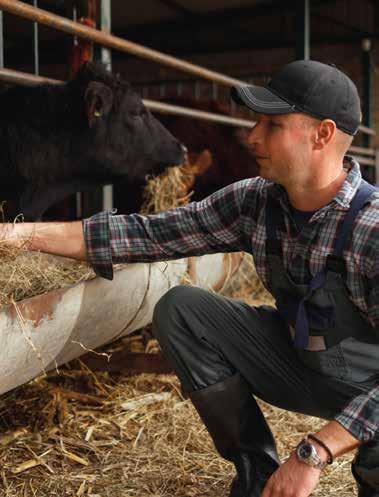







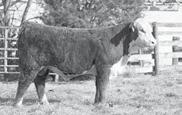
Annual Convention is “Where the Beef Industry Meets”
Downtown Nashville, Tennessee, will host CattleCon 2026, Feb. 3-5, 2026. The largest cattle industry event of the year will be held in the heart of Music City, home of honky-tonks, history and hearty food. Thousands of cattlemen and women will gather to learn, conduct business, network and enjoy the sights, sounds and flavors in the “songwriting capital of the world.”
“Nashville has always been a popular location for CattleCon, and we are excited to bring everyone downtown to be close to everything the city has to offer,” said Kristin Torres, executive director of meetings and events at the National Cattlemen’s Beef Association.
“We are planning several special events including an exclusive evening at the historic Ryman Auditorium.”
CattleCon 2026 will feature popular events such as Cattlemen’s College, CattleFax Outlook Session, D.C. Issues Update, Cattle Feeders Hall of Fame Banquet, Environmental Stewardship Regional Awards, and Beef Quality Assurance Awards, along with a few surprises to be announced.
The award-winning NCBA Trade Show will include acres of displays as well as live cattle handling demonstrations, educational sessions and entertainment. Trade show exhibitors will feature the latest advancements, from equipment and technology to pharmaceuticals and feed supplements, all conveniently located under one roof. Registration will open in August, and additional information will be available at convention.ncba.org.
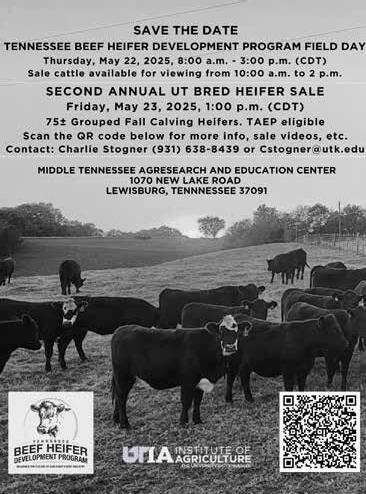

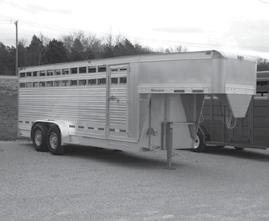


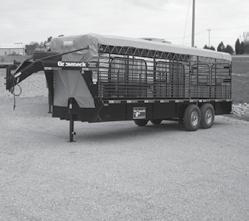
























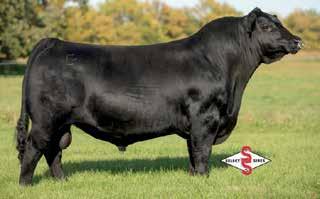


• Replacement Heifers
• Fall Bred Heifers
• Breeding Age Bulls Saturday Noon APRIL 26, 2025
OVER 80 HEAD SELL!
• Fall Bred Cows and Calves • Spring Pairs



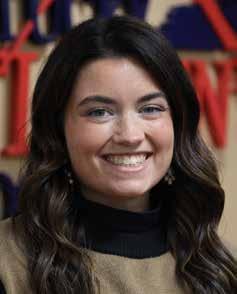
Whitney Peck of Fredonia has been selected as the 2025 spring intern for the Kentucky Beef Council. Whitney was raised on a cow-calf farm in the heart of Fredonia. Whitney grew up highly involved in FFA and the Kentucky Junior Cattlemen's Association, where she now serves as vice president. Currently, Whitney is a sophomore at the University of Kentucky majoring in animal sciences (food animal enterprises and production) with a minor in agricultural economics. She serves as chapter vice president for Sigma Alpha (professional agriculture sorority), a Martin-Gatton College of Agriculture, Food, and Environment student ambassador, president of the Collegiate Cattlemen's and is also involved with Collegiate Farm Bureau.
Through her involvement with the Kentucky Junior Cattlemen’s board of directors, she grew a strong passion for the beef industry. She is excited to continue her knowledge of the industry through working with the Kentucky Beef Council as a spring intern.
Kelsey Miracle, originally from Frankfort, is serving as the Kentucky Cattlemen's Association’s membership intern for Spring 2025. A 2020 graduate of Western Hills High School, Kelsey's involvement in
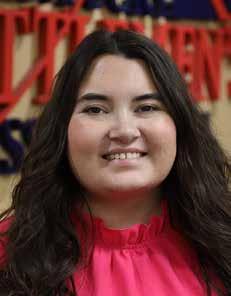
Breeder Since 1962
Ø Bull calves out of HCR Answer HCR SPIRIT 4007.
Ø Bull calves out of HCR Answer 2042 and HCR SPIRIT 4007.
growth.
Ø Bulls for both purebred and commercial breeders.
Ø Bred for calving ease and growth.
Ø Yearlings and two-year-olds available.
Ø Bred for calving ease and growth. Ø Bulls for both purebred and commercial Ø Yearlings and two-year-olds available.
Ø Bred heifers to calve in fall available.
Ø Bulls for both purebred and commercial breeders.
Ø Yearlings and two-year-olds available.
her local FFA program sparked her interest in agriculture despite her lack of a deep agricultural background. She is in her final semester at Eastern Kentucky University and is pursuing a bachelor's degree in agriculture with a concentration in livestock management.
Ø Bred heifers to calve in fall available.
John Allison, Owner 545 Eminence Road New Castle, KY 40050 502-220-3170 David
John Allison, Owner 545 Eminence Road New Castle, KY 40050 502-220-3170 David Carter, Farm Manager 502-706-0075
During her time at EKU, Kelsey has been heavily involved in the agricultural community. She has been a member of the EKU Block and Bridle Club for the past three years and is currently the club's membership committee chairman. Additionally, Kelsey is a member of Delta Tau Alpha, an agricultural honor society. Her college experience has helped her discover a deep passion for farm production and the producers who make the agriculture industry what it is.
Kelsey is incredibly excited to use her internship at the Kentucky Cattlemen's Association to further develop her understanding of the beef industry and connect with local producers. She looks forward to gaining valuable knowledge about genetics within the cattle industry, a field she hopes to pursue professionally after graduation. With her eagerness to learn and grow, Kelsey is optimistic about the experiences and opportunities her internship will provide.


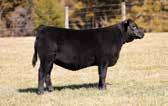

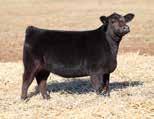

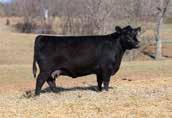


39TH ANNUAL BEEF SHOWCASE BRINGS INCREASE FOR AVERAGE SALES OVER LAST YEAR
FRANKFORT, Ky. (March 6, 2025) – The 2025 Kentucky Farm Bureau Beef Expo finished with more than $700,000 in total sales in the 39th edition of the event at the Kentucky Exposition Center during the first weekend of March.
Total sales in 2025 were $702,537. Although that represented a decrease of $137,143 compared to last year’s sales, the average sale per lot increased by $695 to $3,369 this year. The decrease in total sales was due largely to the decrease in the number of lots sold, which were 208.5 compared to 314 last year.
“Cattle are one of Kentucky’s top livestock. As the largest beef cattle state east of the Mississippi River, the Kentucky Farm Bureau Beef Expo showcases that year after year,” Kentucky Agriculture Commissioner Jonathan Shell said. “Although overall sales were down this year compared to last year, we were excited to see average sale prices on the rise. We predict good things in our future.”
Angus cattle brought an average of $4,622 per lot to lead all breeds. The sale topper was a $15,000 bull from Rocking P Livestock of Maysville, Ky., and Circle M Farms out of Rockwall, Texas. The Beef Expo welcomed 10 states, including Kentucky, and seven breeds this year.
In the junior show, 266 cattle from nine states passed through the show ring, including 192 from Kentucky. This year’s judging contest broke an Expo record with 156 contestants.
The 2025 Beef Expo’s main sponsors were Kentucky Farm Bureau and the Kentucky Department of Agriculture.
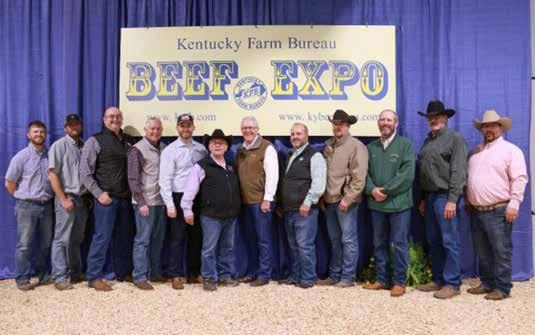






Where do you think the phrase “dropping like flies” came from?

Count on Y-TEX ® insecticide ear tags to knock out flies, ticks and lice.
Insect pests can wreak havoc on your cattle, from reducing weight gains to carrying costly diseases like pink eye. That’s why it pays to protect your herd with the proven performance of Y-TEX® insecticide ear tags. Y-TEX® tags control a wide range of livestock pests, including horn flies, face flies, stable flies, black flies, Gulf Coast and spinose ear ticks and lice.
So when it’s time to protect your cattle from flies, ticks and lice, look for the insecticide tags that put a stop to profit-robbing pests: TRI-ZAP ™ , MAX 40 ™ , XP 820 ® , OPtimizer ®, PYthon® II, and PYthon® II Magnum™from Y-TEX®.




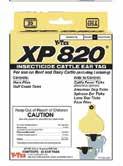
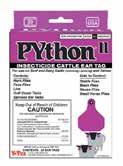
Always read and follow label directions. All brands shown are trademarks or registered trademarks of Y-TEX® Corporation. © 2020 Y-TEX® Corporation.
Kenny Burdine University of Kentucky
(doramectin and levamisole injection)
(5 mg/mL doramectin, 150 mg/mL levamisole hydrochloride)
CAUTION: Federal law restricts this drug to use by or on the order of a licensed veterinarian.
INDICATIONS: VALCOR™ is indicated for the treatment and control of the following species of parasites in beef cattle two months of age and older and in replacement dairy heifers less than 20 months of age. Not for use in beef bulls intended for breeding over 1 year of age, dairy calves, and veal calves.
Reproductive efficiency has a major impact on the profitability of a cowcalf operation. Discussions around this topic often focus on getting cows bred, which is definitely a crucial first step. Most economic research suggests either culling open cows or only retaining them in specific/ unique situations. However, getting cows bred in a timely manner also has a significant impact on revenues. With spring calving underway, I thought it might be a good time to discuss the costs associated with those cows that don’t calve as early as we would like them to.
Brief Summary of full Prescribing Information.
The cost that immediately comes to mind for late calving cows is that they wean smaller calves. These lower weaning weights are primarily a function of age as calves born later in the calving season will be younger at weaning time. Given reasonable assumptions of weight gain, each cycle missed can easily result in 40-50 fewer pounds at weaning. Needless to say, the revenue difference between cows bred during their first cycle vs those bred during the third or fourth cycle can be very significant. There is another cost of late calving cows that does not get as much
(5 mg/mL doramectin, 150 mg/mL levamisole hydrochloride)
CAUTION: Federal law restricts this drug to use by or on the order of a licensed veterinarian.
INDICATIONS:
VALCOR™ is indicated for the treatment and control of the following species of parasites in beef cattle two months of age and older and in replacement dairy heifers less than 20 months of age. Not for use in beef bulls intended for breeding over 1 year of age, dairy calves, and veal calves.
Gastrointestinal Roundworms (adults and fourth stage larvae): Ostertagia ostertagi (including inhibited larvae), O. lyrata, Haemonchus placei, Trichostrongylus axei, T. colubriformis, T. longispicularis*, Cooperia oncophora, C. pectinata*, C. punctata, C. surnabada, Bunostomum phlebotomum*, Strongyloides papillosus*, Oesophagostomum radiatum, Trichuris spp.*, Nematodirus helvetianus*. Lungworms (adults and fourth stage larvae): Dictyocaulus viviparus. Eyeworms (adults): Thelazia spp. Grubs (parasitic stages): Hypoderma bovis, H. lineatum. Sucking Lice: Haematopinus eurysternus, Linognathus vituli, Solenopotes capillatus. Mange Mites: Psoroptes bovis, Sarcoptes scabiei. *Adults only WARNINGS AND PRECAUTIONS:
WITHDRAWAL PERIODS AND RESIDUE WARNINGS:
Cattle must not be slaughtered for human consumption within 15 days following last treatment with this drug product. Not for use in female dairy cattle 20 months of age or older, including dry dairy cows; use in these cattle may cause drug residues in milk and/or in calves born to these cows or heifers. Not for use in beef calves less than 2 months of age, dairy calves, and veal calves. A withdrawal period has not been established for this product in pre-ruminating calves.
Gastrointestinal Roundworms (adults and fourth stage larvae): Ostertagia ostertagi (including inhibited larvae), O. lyrata, Haemonchus placei, Trichostrongylus axei, T. colubriformis, T. longispicularis*, Cooperia oncophora, C. pectinata*, C. punctata, C. surnabada, Bunostomum phlebotomum*, Strongyloides papillosus*, Oesophagostomum radiatum, Trichuris spp.*, Nematodirus helvetianus*. Lungworms (adults and fourth stage larvae): Dictyocaulus viviparus. Eyeworms (adults): Thelazia spp. Grubs (parasitic stages): Hypoderma bovis, H. lineatum. Sucking Lice: Haematopinus eurysternus, Linognathus vituli, Solenopotes capillatus. Mange Mites Psoroptes bovis, Sarcoptes scabiei. *Adults only
WARNINGS AND PRECAUTIONS: WITHDRAWAL PERIODS AND RESIDUE WARNINGS: Cattle must not be slaughtered for human consumption within 15 days following last treatment with this drug product. Not for use in female dairy
product. Wash hands after use. Take care to avoid accidental selfinjection. If accidental injection occurs, seek medical attention and provide product package insert to medical professional. To obtain a Safety Data Sheet(s), contact Zoetis Inc. at 1-888-963-8471 or www.zoetis.com.
Animal Safety Warnings and Precautions:
hydrochloride)
CAUTION: Federal law restricts this drug to use by or on the order of a licensed veterinarian.
INDICATIONS:
VALCOR™ is indicated for the treatment and control of the following species of parasites in beef cattle two months of age and older and in replacement dairy heifers less than 20 months of age. Not for use in beef bulls intended for breeding over 1 year of age, dairy calves, and veal calves.
medical intervention. observed, and those post injection. Injection resolved between 21 injection sites included and fibrosis.
Female Reproductive was established in dose of VALCOR™ was recommended dose implantation, or organogenesis, calving, abortion, and 30±2
B:4.917"
T:4.917"
The figure above was estimated from preconditioned feeder cattle sales in Kentucky and graphically shows the impact of lot size on feeder cattle prices. I show this figure in most of my Extension programs and always like to focus people’s attention on the left side of the graph. Notice how much price improvement was seen simply by having calves uniform enough to sell in groups of 5-10, which is attainable even for relatively small cow-calf operations. In this dataset, a group of five outsold a single by $11 per cwt and a group of 10 outsold a single by $15 per cwt. Larger lots sizes are always preferred, but the key message is that producers must manage their herds to limit the number of calves that get sold as singles or in very small groups. Lot Size Impacts (Halich & Burdine, 2015)
attention but is also very important. In addition to those late born calves being smaller at weaning, they are also more likely to be sold in smaller groups since there are fewer of them. Smaller lot sizes are consistently associated with lower calf prices in the literature, which means these late born calves may take another hit in value beyond their lower sale weight.
Gastrointestinal Roundworms (adults and fourth stage larvae): Ostertagia ostertagi (including inhibited larvae), O. lyrata, Haemonchus placei, Trichostrongylus axei, T. colubriformis, T. longispicularis*, Cooperia oncophora, C. pectinata*, C. punctata, C. surnabada, Bunostomum phlebotomum*, Strongyloides papillosus*, Oesophagostomum radiatum, Trichuris spp.*, Nematodirus helvetianus*. Lungworms (adults and fourth stage larvae): Dictyocaulus viviparus. Eyeworms (adults): Thelazia spp. Grubs (parasitic stages): Hypoderma bovis, H. lineatum. Sucking Lice: Haematopinus eurysternus, Linognathus vituli, Solenopotes capillatus. Mange Mites: Psoroptes bovis, Sarcoptes scabiei. *Adults only
Use of levamisole in cattle treated in the last few days with cholinesterase inhibitors such as organophosphates or with morantel may enhance the toxic effects of levamisole. Use together with caution. Destruction of Hypoderma larvae (cattle grubs) at the period when these grubs are in vital areas may cause undesirable host-parasite reactions including the possibility of fatalities. Killing H. lineatum when it is in the tissue surrounding the gullet may cause bloat; killing H. bovis when it is in the vertebral canal may cause staggering or paralysis. These reactions are not specific to treatment with VALCOR™ and can occur with any successful treatment of grubs. Cattle should be treated either before or after these stages of grub development. Consult your veterinarian concerning the proper time for treatment. Follow recommended dosage carefully.
Reproductive safety has not been evaluated in bulls intended for breeding.
Valcor PI Resize
WARNINGS AND PRECAUTIONS: WITHDRAWAL PERIODS AND RESIDUE WARNINGS: Cattle must not be slaughtered for human consumption within 15 days following last treatment with this drug product. Not for use in female dairy cattle 20 months of age or older, including dry dairy cows; use in these cattle may cause drug residues in milk and/or in calves born to these cows or heifers. Not for use in beef calves less than 2 months of age, dairy calves, and veal calves. A withdrawal period has not been established for this product in pre-ruminating calves.
ADVERSE REACTIONS: This product is likely to cause swelling at the injection site. Tissue damage at the injection site may also occur, including possible granulomas and necrosis. These reactions have resolved without treatment. Local tissue reaction may result in trim loss of edible tissue at slaughter. A single death attributed to clostridial infection associated with the injection of VALCOR™ was reported in a nonpivotal effectiveness study. Observe cattle for injection site reactions. If injection site reactions are suspected, consult your veterinarian. This product is not for intravenous or intramuscular use. Hypersalivation may be observed; however, this reaction will disappear within a few hours. If this condition persists, a veterinarian should be consulted.
Contact Information:
User Safety Warnings: Not for human use. Keep out of reach of children. If accidental eye contact occurs, flush eyes immediately with water for 15 minutes and seek medical attention. If wearing contact lenses, flush eyes immediately with water before removing lenses then continue rinsing for at least 15 minutes. Do not eat, drink or smoke while handling the
Valcor_3rd_Page_Brief_Summary_CC.indd 3-12-2024 3:41 PM Saved at From BR1818 Meg By 1
User Safety Warnings: Not for human use. Keep out of reach of children. If accidental eye contact occurs, flush eyes immediately with water for 15 minutes and seek medical attention. If wearing contact lenses, flush eyes immediately with water before removing lenses then continue rinsing for at least 15 minutes. Do not eat, drink or smoke while handling the
ZOBF4PARA054 ZOBF4PARA054
product. Wash hands after use. Take care to avoid accidental selfinjection. If accidental injection occurs, seek medical attention and provide product package insert to medical professional. To obtain a Safety Data Sheet(s), contact Zoetis Inc. at 1-888-963-8471 or www.zoetis.com.
x 4.938”
Animal Safety Warnings and Precautions: Use of levamisole in cattle treated in the last few days with cholinesterase inhibitors such as organophosphates or with morantel may enhance the toxic effects of levamisole. Use together with caution. Destruction of Hypoderma larvae (cattle grubs) at the period when these grubs are in vital areas may cause undesirable host-parasite reactions including the possibility of fatalities. Killing H. lineatum when it is in the tissue surrounding the gullet may cause bloat; killing H. bovis when it is in the vertebral canal may cause staggering or paralysis. These reactions are not specific to treatment with VALCOR™ and can occur with any successful treatment of grubs. Cattle should be treated either before or after these stages of grub development. Consult your veterinarian concerning the proper time for treatment. Follow recommended dosage carefully.
Reproductive safety has not been evaluated in bulls intended for breeding.
ADVERSE REACTIONS:
This product is likely to cause swelling at the injection site. Tissue damage at the injection site may also occur, including possible granulomas and necrosis. These reactions have resolved without treatment. Local tissue reaction may result in trim loss of edible tissue at slaughter. A single death attributed to clostridial infection associated with the injection of VALCOR™ was reported in a nonpivotal effectiveness study. Observe cattle for injection site reactions. If injection site reactions are suspected, consult your veterinarian. This product is not for intravenous or intramuscular use. Hypersalivation may be observed; however, this reaction will disappear within a few hours. If this condition persists, a veterinarian should be consulted.
Contact Information:
Contact Zoetis Inc. at 1-888-963-8471 or www.zoetis.com. To report suspected adverse drug experiences, contact Zoetis Inc. at 1-888-963-8471. For additional information about reporting adverse drug experiences for animal drugs, contact FDA at 1-888-FDA-VETS or http://www.fda.gov/reportanimalae.
TARGET ANIMAL SAFETY: Margin of Safety: Subcutaneous administration of VALCOR™ was well tolerated in calves as young as 3 months of age at 1, 2, or 3 times the recommended dose. Dose-dependent post-dose hypersalivation was seen in all treated groups compared to the controls. All cases of hypersalivation were mild, transient, and resolved without further
Contact Zoetis Inc. at 1-888-963-8471 or www.zoetis.com. To report suspected adverse drug experiences, contact Zoetis Inc. at 1-888-963-8471. For additional information about reporting adverse drug experiences for animal drugs, contact FDA at 1-888-FDA-VETS or http://www.fda.gov/reportanimalae.
TARGET ANIMAL SAFETY:
Margin of Safety: Subcutaneous administration of VALCOR™ was well tolerated in calves as young as 3 months of age at 1, 2, or 3 times the recommended dose. Dose-dependent post-dose hypersalivation was seen in all treated groups compared to the controls. All cases of hypersalivation were mild, transient, and resolved without further
medical intervention. Dose-related injection site reactions were observed, and those in the 1X group resolved between 21 and 28 days post injection. Injection site reactions were primarily swelling which resolved between 21 and 28 days post injection. Findings from the injection sites included swelling, edema, inflammation, muscle necrosis and fibrosis.
Female Reproductive Safety: The reproductive safety of VALCOR™ was established in two studies with female cattle. First, a single dose of VALCOR™ was administered subcutaneously at 3 times the recommended dose at times coinciding with folliculogenesis, implantation, or organogenesis, and had no effects on conception, calving, abortion, and stillbirth rates, and post-natal viability up to 30±2 days post-calving. There were no congenital abnormalities. The only test article-related change was an increase in incidence and duration of swelling at injection sites compared with control, but all swellings eventually resolved. In a second study, a single dose of VALCOR™ administered subcutaneously at 3 times the recommended dose at either early or late gestation had no effects on calving, abortion, and stillbirth rates, and post-natal viability up to 30±2 days post-calving. One control calf and two treated calves were born with congenital abnormalities and did not survive. These were not determined to be test article-related. The only test article-related change was an increase in incidence and duration of swelling at injection sites, but all swellings eventually resolved. Not for use in bulls intended for breeding over 1 year of age, as reproductive safety has not been evaluated.
HOW SUPPLIED:
VALCOR™ is available in 100 mL, 250 mL and 500 mL multi-dose, rubber-capped glass vials.
HANDLING,
Pick up creative from here:\rafp://sentinel.hq.bad er-rutter.com/Production/Zoetis/2024/ZOBF/PARA/ ZOBF4PARA054_Ad_Resizes/01_Assets/Valcor_3rd_Page_ Brief_Summary.pdf\r\rCenter to fit in size above.\r\rNew filename: Valcor_3rd_Page_Brief_Summary_CC Notes
STORAGE, HANDLING, AND DISPOSAL: Store below 25°C (77°F). Do not expose to light for extended periods of time. Do not contaminate water by direct application or by improper disposal of drug containers. Dispose of containers in an approved landfill or by incineration.
Approved by FDA under NADA # 141-553

You can achieve effective parasite control in one product, where before you may have needed two. Valcor (doramectin and levamisole injection) is the first prescription cattle dewormer with two active ingredients in one dose. It’s never been easier to be tough. Get tough at ValcorTough.com.


















IMPORTANT SAFETY INFORMATION: Do not treat cattle with Valcor within 15 days of slaughter. Not for use in female dairy cattle 20 months of age or older, including dry dairy cows; not for use in beef calves less than 2 months of age, dairy calves, and veal calves. Safety has not been evaluated in breeding bulls. Use with caution in cattle treated with cholinesterase inhibitors. This product is likely to cause injection site swelling; tissue damage (including granulomas and necrosis) may occur. These reactions have resolved without treatment. See Brief Summary of Full Prescribing Information on the next page.

Michelle Arnold DVM (Ruminant Extension Veterinarian, UKVDL)
Ruminant animals produce large volumes of gas during the normal process of fermentation during forage digestion. This gas is predominantly belched up or it passes through the gastrointestinal tract. If something interferes with gas escape from the rumen, pressure builds up and causes an obvious swelling on the left side of the body, a condition known as “bloat” (Figure 1). The swollen rumen compresses the lungs which interferes with breathing and tissue oxygenation, obstructs blood flow to vital organs and results in rapid death of the animal. Bloat may be classified into one of two types, “free gas” or “frothy”, with both types possible in cattle whether on pasture or in confinement. Free gas bloat is most often due to obstruction of the esophagus (choke) with rapid onset of bloat and death if not caught quickly. Free gas bloat can be treated through the removal of the esophageal obstruction or by passing a tube through the esophagus into the rumen to release the trapped gas. Frothy bloat, on the other hand, results when fermentation gases become trapped within a stable foam in the rumen and the animal is no longer able to belch up the gas. Simply passing a tube into the rumen will not solve the problem because the froth prevents gas from leaving the pressurized rumen. For effective relief, anti-foaming agents must be delivered directly into the rumen to disperse the foam and allow the gases to escape.
Frothy bloat occurs in cattle when grazing forages high in soluble protein and low in fiber, most commonly pastures with a high percentage of immature legumes (alfalfa, clover) or succulent, vegetative wheat pastures. This disorder is caused by the interaction of many factors including environmental conditions, the structural and chemical composition of the forages present and physiologic factors within the animal. Because it is multifactorial, frothy bloat occurrence is sporadic, unpredictable and very
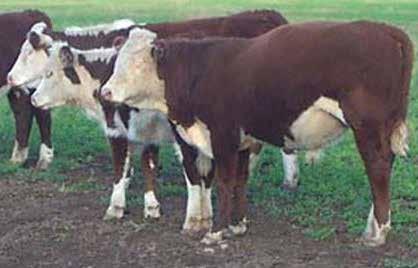
difficult to completely prevent. The disorder is most commonly reported when cattle, especially yearlings, graze legume or legume-based pastures (over 50% legumes) in the late winter and early spring. Bloat incidence varies year-to-year depending on the relative presence or absence of clover; years with low residual grass cover in the fall and sufficient moisture in the spring will favor clover dominance. Frothy bloat is also a significant cause of death in wheat pastured stocker cattle. The protein content of wheat forage is influenced by plant growth stage and level of nitrogen fertilization. Vegetative wheat has crude protein (CP) values ranging from 18–34% and low neutral detergent fiber levels of 30–40%. Forage samples from bloat-prone wheat pastures contain less dry matter and total fiber while CP and soluble nitrogen fractions are significantly higher. Death losses from pasture bloat are believed to be approximately 2% annually and are sometimes much higher on individual pastures. Costs of bloat include not only losses of livestock but also decreased productivity from avoidance
of the most nutritious pastures due to bloat risk.
It is well known that frothy bloat results when fermentation gases become trapped in a stable foam in the rumen that cannot be released by belching (eructating). For this foam to form, there needs to be: (1) consumption of a highly digestible, high-protein forage (alfalfa, clover, wheat) that results in rapid gas production, promotes the growth of ruminal microbial populations, and increases the viscosity of rumen fluid; (2) fine plant particles (from ruptured chloroplasts) that cause gas bubbles to coalesce in rumen contents; and (3) ruminal bacterial production of an excessive amount of bacterial “slime” (a mucopolysaccharide complex also known as a “biofilm”). Marked differences exist among animals in their susceptibility to bloat. The onset of bloat is variable between animals and depends on the rate of fermentation of forage and production of ruminal gas, digesta passage rate and foaming properties of rumen contents. For example, a slower

passage rate allows more time for foam formation and a higher chance of bloat. Similarly, the abundance of certain salivary proteins within saliva decrease susceptibility to bloat.
The signs of bloat are easily recognized if observed; the problem is an animal may go from normal to dead within hours. Cattle with early bloat display a distended left flank. They stop grazing and are reluctant to move. As bloat advances, the animal may appear distressed (may vocalize, eyes may bulge), strain to urinate and defecate, exhibit rapid and open mouth breathing, staggering, and in advanced cases the animal will go down. Death is rapid at this stage due to compression of the lungs, diaphragm and major organs by the distended rumen. Animals that are mildly affected can be treated orally with an anti-bloat preparation (Figure 2). After dosing, it is encouraged to keep the animal moving to allow the preparation to mix with the frothy rumen contents. Bloated animals starting to show signs of distress need immediate veterinary attention. A stomach tube can sometimes be used to relieve the gas buildup by delivering anti-foaming agents directly into the rumen through the tube. Moving the animal around after treatment is again important. Animals that are severely bloated and distressed need more rapid relief. This may be achieved by inserting a widebore trochar and cannula (Figure 3) into the rumen high on the left flank (where the swelling is greatest). After gas and froth is released, an anti-bloat
preparation can be poured through the cannula into the rumen to help break down all remaining froth/foam. In emergency situations, vegetable oil (250–500 mL) or mineral oil (100–200 mL) can be used instead. In most cases of advanced frothy bloat, a trochar and cannula will quickly plug up with foam and will not be adequate to relieve pressure. In those cases, a 10–20 cm incision will have to be made using a scalpel or clean, sharp knife inserted into the highest point of the left flank. It may be necessary to remove the frothy material out of the rumen by hand. In these emergency cases there is usually no time to wait for a vet to arrive, so livestock owners will have to do this themselves. Veterinary attention is still necessary to irrigate the abdominal cavity, clean and stitch the wound and begin antibiotic treatment to prevent serious infection.
The anti-foaming agent of choice for treatment and prevention of frothy bloat is the feed additive poloxalene, a surfactant that reduces the surface tension of foam, decreases foam formation in the rumen and releases entrapped fermentation gases. There are several poloxalene-containing products available for use in grazing programs, including feed additives, top dresses, mineral supplements, blocks and liquid feeds. It is important to remember that to be effective, adequate amounts of poloxalene must be consumed daily to reduce foam formation. Guaranteed consumption of a sufficient amount of poloxalene may require hand-feeding a palatable supplemental feed containing poloxalene each day. Because of cost, it is generally not economically feasible to feed poloxalene continuously throughout the spring grazing period. Feeding the ionophore monensin
(Rumensin®) can also help to reduce bloat, and it has the added benefits of increasing weight gain and improving feed efficiency. Monensin reduces the amount of stable foam produced during fermentation so it can be used to help prevent bloat. To be most effective, it is recommended to begin feeding monensin products 10-14 days prior to grazing risky pastures.
The current advice to beef producers to prevent frothy bloat is to:
• Avoid grazing cattle on lush, rapidly growing, immature legume or wheat pastures; this is exceptionally important if the forage is wet from dew or rain;
• Watch cattle closely as bloat onset may be observed within an hour after introduction to new pasture. However, cattle more commonly bloat on the second or third day (or longer) following introduction;
• Slow the rate of rotational grazing in order to graze cattle on more mature pastures;
• Provide cattle with access to antibloat blocks or licks;
• Ensure cattle have hay available;
• Provide additional calcium to growing cattle on wheat pasture because ruminal and gut motility is greatly compromised by subclinical deficiencies of calcium;
• Always provide a good trace mineral mix to grazing cattle as high potassium and low sodium levels in the rumen are associated with bloat;
• Provide access to a clean water source;
• Grow grass-legume mixtures and/ or incorporate bloat-resistant legumes into pastures.


Chris Teutsch UK Research and Education Center, Princeton
In March and April, grass growth in Kentucky’s pastures goes from 0 to 60 mph in just a few short weeks. We often find ourselves impatiently waiting for grass to start growing and then just a few short weeks later wondering what we are going to do with it all! The following suggestions can help you to optimize spring grass growth and utilization.
• Implement rotational grazing. To fully utilize the spring flush of pasture growth YOU must be in control of grazing. In a continuous grazing system, the cows are in charge. By utilizing rotational stocking, you start to make the decisions. Implementing a rotational stocking system may be as simple as closing some gates or stringing up some polywire.
• Feed a little hay in late winter and early spring. It is tempting to just let cattle roam and pick pastures for early grass growth, but this can set pastures back and reduce overall dry matter production. It is important to restrict cattle to one area, feed a little hay, and allow pastures to accumulate 4-5” of growth before starting to graze.
• Start grazing at 4-5” of growth. Another common mistake that producers make is waiting too long to start grazing. If you wait until the first paddock has, 8-10” of growth, by the time you reach the last paddock it will be out of control. Starting a little bit early allows you to establish a “grazing wedge” (Figure 1).
• Rotate animals rapidly. It is important to realize that grazing pastures closely and repeatedly as they initiate growth in early spring can reduce production for the entire season. Therefore, it is important to keep animals moving rapidly through the system. The general rule is that if grass is growing rapidly then your rotation should be rapid. This
the rotation and harvested for conserved forage. Cutting at the late boot or early head stage will optimize yield and forage quality.
will allow you to stay ahead of the grass by topping it off and keeping it in a vegetative state.
• Do not apply spring nitrogen. Applying nitrogen in the spring will make the problem of too much grass at once even worse. In many cases you are better off applying nitrogen in late summer or early fall to stimulate growth for winter stockpiling.
• Remove most productive paddocks from rotation and harvest for hay. Graze all paddocks until the pasture growth is just about to get away from you and then remove those productive paddocks from your rotation and allow them to accumulate growth for hay or baleage harvest (Figure 2).
• Increase stocking rate in the spring. An alternative to harvesting excess forage as hay
or baleage is to increase your stocking rate by adding more animal units in the spring and then decreasing animal numbers as plant growth slows due to higher temperature during the summer months. While this is a viable approach, it is not practical on smaller or part-time operations.
• Even out seasonal distribution of forage by adding warmseason grasses. Adding a well-adapted warm-season grass that produces most of its growth in July and August would allow you to concentrate grazing on your cool-season paddocks during periods of rapid growth (spring flush). After cool-season grass growth slows in late spring and early summer, animals can be shifted in the warm-season paddocks for summer grazing.
• Bush hog out of control pastures. The benefits of clipping include maintaining pastures in a vegetative state, encouraging regrowth and controlling weeds. Clipping pastures costs money, so make sure that the primary reason for bush hogging is pasture management, not aesthetics.
• Stockpile out of control pastures for summer grazing. Although forage quality decreases as the plant matures, the quality of spring stockpiled pasture is sufficient for dry cows and in some cases can result in reasonable gains on growing animals (Figure 3) during the summer months. This is especially true if using novel endophyte tall fescue and the pastures were clipped at the early boot stage to promote vegetive regrowth. This could be a cost-effective and simple way to provide additional grazing during the summer months.
Managing spring grass can be challenging. It is important to find that “sweet spot” for starting to graze, not too early and not too late! Hopefully one or more of the above tips will help you optimize your spring grass! Proportion of Annual Growth
Figure 3: Excess growth in the spring could also be stockpiled for grazing during the summer months. This is accomplished by removing some paddocks from the rotation and allowing growth to accumulate during late spring and early summer. It is important to remember that only about the one-half of the available biomass should be grazed. The remaining residue will protect plant crowns from high temperatures and reduce soil moisture loss during the summer months.
For more information on grazing management contact your local extension agent or
www.uky.edu/Ag/Forage and
This month’s featured video is: “Summer Stockpiling: Thinking Outside of the Box”. This video can be viewed by visiting https://tinyurl.com/4fktcchf or going to the KYForages YouTube Channel.
FEATURED
This month’s featured publication is: “AGR-229: Warm Season Annual Grasses in Kentucky.” It is available online at https://tinyurl.com/326s4s3h or by visiting your local extension office.
Connect wires in parallel at the end of runs. A good way to increase the ability of a fence to carry voltage is to connect all the wires at the beginning and end of runs of multi-wire fence. This allows the multiple strands of high tensile wire to function as one large wire that is capable of carrying higher levels of voltage.
• Graze winter annuals.
• Flash graze paddocks that were frost seeded with clover.
• Allow calves and lambs to creep graze.
• As pasture growth begins, rotate through pastures quickly to keep up with initial growth.
• As pasture exceeds the needs of grazing livestock, remove some pastures from the rotation and allow growth to accumulate for hay or silage harvest.
• Get equipment ready to harvest hay at the late boot stage to early head stage top optimize yield and forage quality.
• Determine the need for and prepare to plant warm-season annuals.

Meet NovaGraz™ herbicide. Now you can maximize your pasture’s potential by increasing forage quality and maintaining broad-spectrum weed control without soil residual activity.
Increase your cattle conception rates by up to 25%.
Get healthier and better-performing cattle by preserving white clover and annual lespedeza in tall fescue pastures.

Increase average daily gain by up to 50%.
Diversify grazing opportunities by preserving white clover and annual lespedeza in tall fescue pastures.
White clover can increase soil nitrogen by up to 150 pounds per acre.
Controlling broadleaf weeds and preserving white clover ensures the nitrogen you are capturing is used by the desirable forage and not weeds.
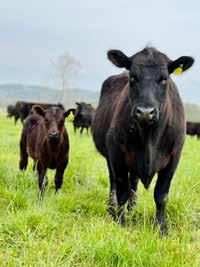


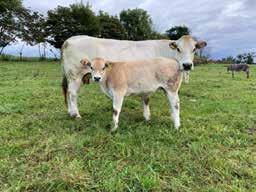

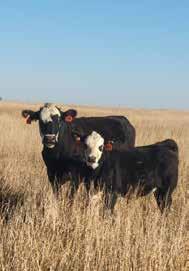
E.
F.
G.
H.
These top 10 entries in each category were selected by a panel of judges. These photos were published to Facebook, where the public got to vote on their favorite. The photo with the most engagement from each category are your 2025 Bovine Beauties Contest winners!

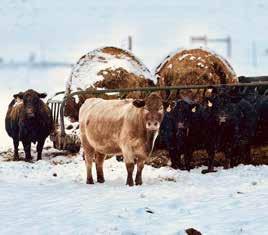











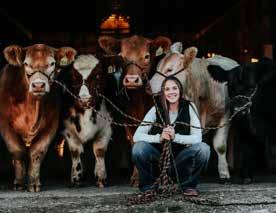









Thank you to all who contributed photos for our 2025 Bovine Beauties.
We look forward to seeing you again in 2026!


































































































































With more than 18 years of experience in agricultural lending, Andy Bishop brings a wealth of knowledge to every client. From small family farms to large corporate operations, Andy understands the unique financial needs of farmers - because he is one.
As the owner of an Angus cattle farm, Andy combines professional expertise with firsthand experience. Work with someone who truly understands the business and is committed to helping you grow.


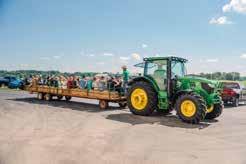














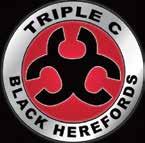


Katie VanValin Assistant Extension Professor, University of Kentucky
Developing and first calf heifers are not the same as mature cows. While that seems like an obvious statement, there is still a common belief that heifers should be able to “get by” under the same management as mature cows. The thought is that we are selecting heifers that match available resources when we should be selecting heifers that will become cows that match our resources. Because heifers still have additional nutrient requirements for growth, they require different nutritional management than cows.
In the beef industry, we talk about selecting “heifer-acceptable” bulls all the time, because we understand the need for emphasis on calving ease in heifers compared to mature cows. If we are going to keep back our own replacements or develop heifers, we also need to think about selecting a heifer acceptable feeding program.
Decades of research have helped us understand how heifers and cows prioritize nutrients (Figure 1). The first priority is meeting maintenance requirements—these are the nutrients needed to keep the animal alive and maintain their current body condition. Next up is supporting lactation, followed by growth (for growing females), supporting an existing pregnancy, and lastly, the estrous cycle or the ability to breed back.
First-calf heifers are particularly vulnerable in a cow-calf operation. They must do everything a mature cow does— raise a calf and breed back—while also continuing to grow.
The consequence of not meeting her nutrient requirements is the inability to breed back, often resulting in young females being culled from the herd. Developing heifers is a significant investment, with costs spread over the animal’s productive lifetime. Research has shown that it takes at least 4-5 years for a heifer to pay for herself. When first-calf heifers fail to breed back and are culled, it almost always results in a net loss to the operation. Not only have we failed to recoup her development costs, but we’ve also lost out on potential income from her future calves.
Reproductive failure in these young females is often wrongly blamed on genetics, but we know reproductive traits are lowly heritable. The real blame is likely due to nutrition, or more specifically undernutrition. The good news is that nutrition is something we can manage and control. Young growing females are smaller than their mature cow counterparts which means that their feed intake will be less than that of the mature cow. With less feed intake, this means that heifers require diets with greater concentrations of energy and protein.
In a typical spring calving system, the herd will likely be consuming lush forages during the breeding season but looking at the critical time leading up to breeding season, most herds will be consuming conserved forages. When thinking about supplementing average quality cool-season grass hay, a lactating cow may require 3 lbs. of dried distillers’ grains, whereas
a heifer consuming this same hay would require 5 lbs. of dried distillers’ grains.
To ensure that heifers are meeting their nutrient requirements, consider managing these young females in a separate group from the rest of the cow herd. For smaller herds, it may also make sense to manage any mature cows that have a low body condition score with these young females. This can allow for strategic supplementation for cattle needing extra nutrition without overfeeding mature cows that are in good body condition.
Always test your hay, and consider feeding higher quality forages to heifers, which can reduce supplemental feed costs. Another benefit to hay testing is the ability to select supplemental feeds that provide the best value based on the amount of supplemental energy or protein required by the herd. Energy is often the most limiting ingredient in forage-based systems, and it is highly unlikely that average quality grass hay is going to be an adequate source of energy for developing heifers, lactating first-calf heifers or even lactating mature cows. Careful consideration should be made to provide adequate energy as well as protein in the diet.
At the end of the day, it is important to remember that developing and first-calf heifers are simply not the same as the mature cows in the herd. Take care to manage these animals to set them up for long-term success and longevity in the herd.
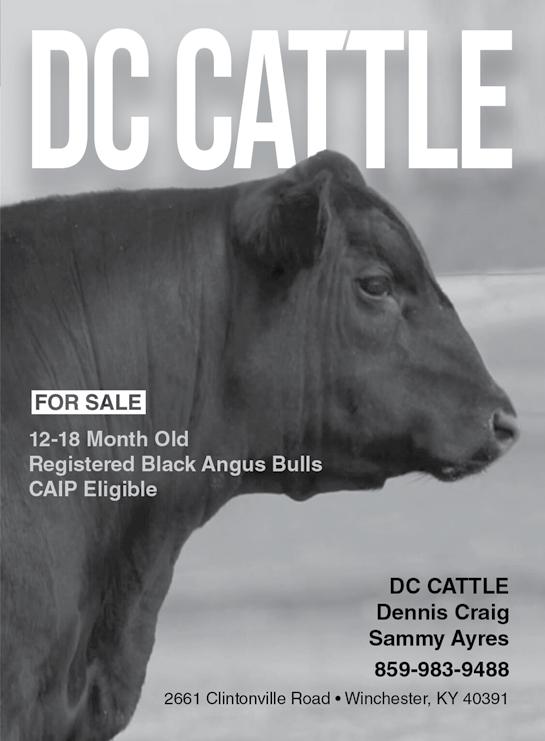

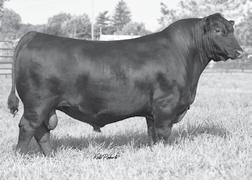






















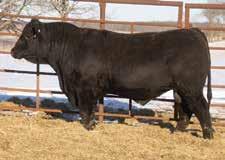




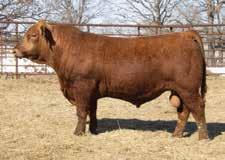





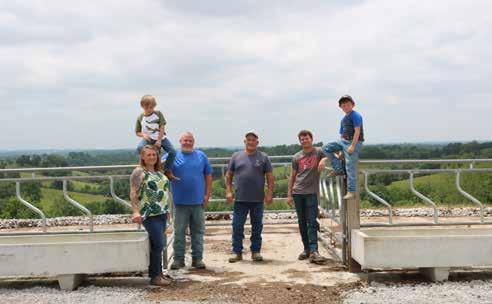
I
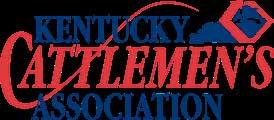
* MEMBERSHIP YEAR 10/1/24– 9/30/25
NAME SPOUSE NAME FARM NAME
*Payments of KCA membership dues are tax deductible for most members as an ordinary and necessary business expense. However, charitable contributions of gifts to KCA are not tax deductible for Federal Income Tax purposes. Due to new IRS regulations, $2.24 of your dues would not be deductible. Approximately $12 of your dues will go towards the monthly publication Cow Country.
PLEASE CHECK THE MEMBERSHIP(S) YOU WOULD LIKE TO JOIN:
KCA MEMBERSHIP ($30/YR) NEW RENEWAL
Membership dues are $30 unless otherwise listed below
KCA COUPLE MEMBERSHIP
To add your spouse, please add $15 to your KCA Membership
KENTUCKY JUNIOR CATTLEMEN’S ASSOCIATION ($10/YR) NEW RENEWAL
I WOULD LIKE ADDITIONAL INFORMATION ON THE YOUNG PRODUCER’S COUNCIL
TOTAL MEMBERSHIP:
$ KCA
$ KJCA
TOTAL CONTRIBUTIONS:
$ CATTLEMEN’S FOUNDATION DONATION (voluntary)
TOTAL AMOUNT ENCLOSED:
$ ALL DONATIONS TO KCF ARE TAX DEDUCTIBLE
COUNTY DUES
Dues are $30 except for the counties listed below.
Allen...............................$40
Anderson........................$25
Bourbon.........................$20
Boyle ..............................$35
Bullitt..............................$20
Butler..............................$25
Franklin ..........................$25
Louisville Area ................$20 (Jefferson, & Spencer) Magoffin .........................$20 Menifee ..........................$25
Mountain........................$25
(Breathitt, Floyd, Knott, Lee, Leslie, Letcher, Morgan, Owsley, Perry & Wolfe)
Highlands .......................$20 (Boyd, Johnson, Lawrence, & Martin) Hopkins ..........................$35 Laurel.............................$35
Woodford......................$25
IF YOU WOULD ALSO LIKE TO JOIN THE NATIONAL CATTLEMEN’S BEEF ASSOCIATION The NCBA is now a State Marketing Partner with the KCA. You can pay your dues to both organizations with one check, at the same time.
+

Kelly Baird Director of Communications and Events
April marks the culmination of multiple seasons here in Kentucky. We’re thawing out and gearing up for grilling season, searching for the perfect holiday recipes, wrapping up March Madness and game-day eats, and most importantly, counting down to Beef Month in May! While we eagerly await a month dedicated to celebrating all things beef, we can first enjoy this season of flavors with delicious beef recipes and the tools to share the beef story.
Beef. It’s What’s for Dinner. has developed new and innovative recipes that are perfect for your next Easter brunch, game-day gathering or busy weeknight meal. These recipes highlight ways to utilize different beef cuts, catering to all budgets while ensuring a delicious dining experience for all ages.
Brisket Deviled Eggs – A flavorful twist on a classic appetizer, perfect for Easter or Derby parties. If you don’t have leftover brisket, utilize leftover steak, roast or even ground beef!
On-the-Go Beef Tacos – A quick and protein-packed option for busy schedules, perfect for family meals or entertaining guests!
As a cattle producer, you are the best advocate for the beef industry. Consumers are more curious than ever about where their food comes from, and your personal experiences build trust while educating them on sustainability, animal care and nutrition.
Social Media – Share your farm’s story, from calving season to pasture management. A simple post can spark meaningful conversations. Social media can be a powerful tool, but it can also be the greatest detriment. Make sure that these posts include background information, do not heavily use lingo and think from the mindset of a consumer trying to learn more!
Community Engagement – Being involved in your local community can showcase your industry! Whether that’s at the local council meetings or the farmers market!
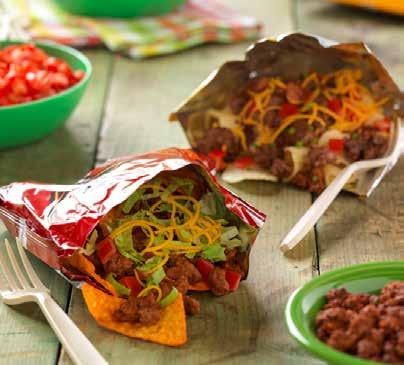
One-on-One Conversations – Whether at church, the grocery store or family gatherings, take the opportunity to answer questions and share why you’re proud to raise beef.
Your voice matters! Every interaction is a chance to build consumer confidence and highlight the dedication behind every cut of beef. If you ever have any questions about how to advocate for beef in your area or are interested in being spotlighted on the Kentucky Beef Council social pages, please contact Kelly Baird at kbaird@kycattle.org or (859) 278-0899.
Mark Your Calendars: Beef Night at the Ballpark
Join us on May 24 for Beef Night at the Ballpark with the Louisville Bats—a night of baseball and beefy fun! Interested in tickets? Email kbaird@kycattle.org or call (859) 278-0899.
Hosting a Beef Month event? If you'd like KBC to set up or assist, reach out to Kelly—we’d love to be part of it!

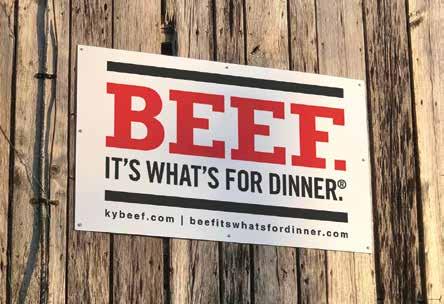
Beef. It’s What’s For Dinner Farm signs are back with new designs!
Crafted on durable 3mm polymetal, these impressive 4 ft x 8 ft signs boldly showcase your passion for the beef industr y. Choose between single or double-sided displays. These versatile signs are per fect for promoting your farm, business, local county Cattlemen’s chapter, and more. Orders will be available for pick up at Kentucky Cattlemen’s Association in Lexington, KY.
FARM NAME
1. Beef. It’s what’s for dinner. (black)
2. Beef. It’s what’s for dinner. (white)
3. Cow/Calf + Farm Name (black on white)
One Sided $457.70
4. Cow/Calf + Farm Name (white on black)
5. Burger + Farm Name (white)
6. Burger + Farm Name (black)
Two Sided $686.54


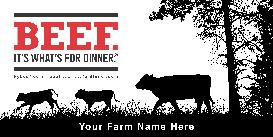

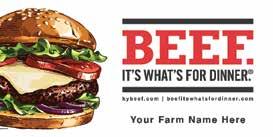
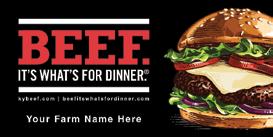

Becky Thompson Director, Kentucky Beef Network
By the time you receive the April edition of Cow Country, Women’s History Month will have passed, but I still want to take a moment to celebrate the incredible gift of being a mom to two daughters and raising them with an appreciation for agriculture.
My husband, Ben and I have two daughters, Maelee, 12, and Maddie,11, who represent the seventh generation of our family engaged in agriculture. However, since we don’t live on a farm or have easy access to one, their involvement may look “nontraditional” to some. Still, I hope these experiences instill in them a deep appreciation for their family heritage and spark a passion for advocating for rural life and food production.
Family has always been the foundation of my connection to agriculture. My childhood was filled with moments of gardening, canning and baking with my grandparents, alongside irrigating corn and spending countless hours at the sale barn with my dad and grandpa. Those experiences shaped my understanding of our role—not just in feeding our own family, but in helping feed the world.
Today, my daughters are finding their own way into agriculture. When we visit Nebraska, they often go to the sale barn with their grandpa. Here in Kentucky, they’ve started tagging along with me to local sales, learning about cattle breeds, calculating hundredweight, and striking up conversations with cattlemen about the weather and the new crop of baby calves. They also enjoy baking with grandma (perhaps because frosting is involved!) and helping me cook dinner—especially when BLTs with homegrown tomatoes are on the menu in the summer.
Last summer, Maddie joined me at

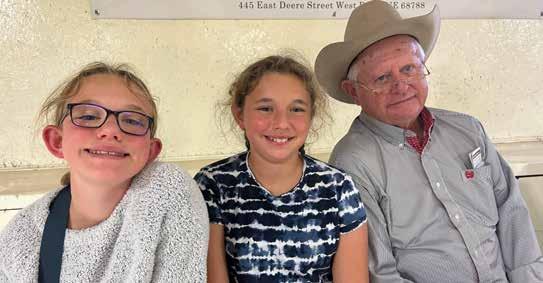
the KJCA Leadership Academy, where she spent the afternoon learning about artificial insemination from our KBN Field Associate, Ben Lloyd. While it may not have been her favorite experience—she’s pretty sure AI technician isn’t in her future—she has eagerly shared what she learned with her friends. Meanwhile, Maelee was elected treasurer of her middle school FFA chapter in Lexington this fall, and like many before her, putting on an FFA jacket has already taken her on new adventures. Both girls volunteered with me at the
Beef Council booth at the State Fair, reading trivia and handing out prizes. They may have encouraged people to search the display boards for the right answers before handing them their prize.
My prayer for my girls is that their love for agriculture and the people in it continue to grow. Whether or not they choose a direct path in the industry, I hope their experiences will always allow them to appreciate its importance and the role they can play in supporting it.

Dan Miller Industry Coordinator, Kentucky Beef Network
There is no denying that the months of January and February gave us more winter than we have had around here in a while. So far March has not relented much either. But complaining about the weather does about as much good as worrying about it.
Our calving season started on Feb. 21 on a 10 degree morning with 15 mph winds. The following two weeks of calving didn’t experience much improvement in the weather. We did have one calf that was lost due to the cold and snowy conditions. A heifer laid down against a gate and pushed the calf out under the gate to where she couldn’t reach it to lick it and get
it up. We found the calf laying there on the frozen snow still alive. It went in the house to get warmed up, but ultimately didn’t make it.
The cows started calving a week after the heifers, although they have been slow to get going. We have also noticed that we have had almost entirely bull calves this year. Out of 34 calves, only five have been heifers. We did not use any sexed semen last year, just conventional semen for AI and then cleaned up with bulls.
So far, we have been calving for 15 days and we have 34 calves on the ground. This puts 41% of the calves born in two weeks. A lot of the cows are looking close so hopefully they

keep dropping them at a steady pace. With any luck, the weather will turn towards spring and these cows keep spitting out healthy calves.


Kenny Burdine University of Kentucky
I doubt many cattle producers would take issue with me calling the last couple of years a “bull market” with tight supplies and strong demand causing an upward market trajectory. The chart tracks the daily nearby CME© feeder cattle futures price over the last 26 months. In January 2023, the nearby feeder cattle futures price was in the $180’s. As I write this article in mid-February 2025, the same futures price is in the $260’s.
While it is hard to dispute the strength of the recent cattle market, it is also important to note that during the last 26 months there have been multiple, significant downward swings. The most recent started the end of January and was likely sparked by the resumption of live cattle imports from Mexico, continued talk of trade disruptions, Avian Influenza and other factors. The market also fell by more than $40 per cwt from September to December 2023 and more than $30 per cwt from late May to early September 2024. For producers who sold cattle during those pullbacks, the impact on returns was significant.
The simplest way to manage price risk may be a forward contract. By forward contracting, price risk is largely eliminated as the seller and buyer agree on a purchase price prior to delivery of the cattle. A similar strategy would be selling cattle through an internet auction and specifying delivery at a later time. In both cases, the seller still has production risk as they must meet the specifications of the contract (weight, quality, etc.), but market swings are no longer a concern.
Futures and options markets are also common risk management tools. Short futures positions allow producers to capitalize on the expectation of cattle prices that are manifested in CME© futures prices. When utilizing a short futures position to offset potential decreases in cattle prices, farmers are essentially exchanging price risk for basis risk. Producers utilizing short futures positions also need to plan for potential margin calls if markets move substantially higher. Put options give producers the right to sell a future contract if they choose. They pay a premium for this flexibility. This effectively sets a price floor for cattle as the strike price on the put option and the
premium paid sets a minimum price for the cattle.
Finally, I have talked more about Livestock Risk Protection LRP) insurance than any other risk management strategy. Unlike several of the other price risk management tools, LRP insurance can be purchased on any number of head, which is much easier for smaller operations to utilize. LRP has become more attractive over the last several years through increased premium subsidies and
allowing producers to pay premiums after the policy’s end date.
I encourage producers to know what risk management tools are available, understand how changes in sale price impact profits, and plan to cover themselves from market downturns. I feel good about the fundamentals of the cattle market, but I think the first couple weeks of February have been a good reminder that price risk always exists, even in a bull market!



Toby & Debby Dulworth 2492 S. Kirkman Road LaCenter, KY 42056 (270) 224-2993 • dogwood@brtc.net Herefords that thrive on forages. www.dogwoodherefords.com

Codee Guffey • 1815 Grassy Springs Road Versailles, Kentucky 40383 (502) 598-6355 rockridgeherefords@gmail.com www.rockridgeherefords.com
Tony & Kathy Staples 992 Knotts Road Brandenburg, KY 40108 (270) 945-9277 (270) 422-4220
tstaples@bbtel.com
Registered Polled Herefords
HANSELL PILE, JR.
12045 St. John Rd. Cecilia, KY 42724
270-735-5192
12 miles West of Elizabethtown

Shannon,
Kentucky Beef Expo Schedule
Monday May 19, 2025 10:30am Bluegrass Stockyards Lexington. For more information contact LW Beckley, DVM 859-779-1419, Dustin Ogburn 502-686-0522, or Andrew Matheny 606-584-5361
Friday March 1st - Hereford Show - 1pm

Saturday March 2nd - Hereford Sale - 1pm
Sunday March 3rd - Open Junior Show - 8am
Polled Herefords 439 Flatwoods Frozen Camp Rd, Corbin KY 40701
Bobby & Brenda Wells (606) 344-0417 wells_farm@yahoo.com
WELLS FARM
Polled Herefords
439 Flatwoods Frozen Camp Rd, Corbin KY 40701
Bobby & Brenda Wells (606) 523-0569 or (606) 344-0417 wells_farm@yahoo.com
Kevin, Angela, Kenlea & Kyler Murray (606) 528-1691 or (606) 682-8413
Toby & Debby Dulworth 2492 S. Kirkman Road LaCenter, KY 42056 (270) 224-2993 dogwood@brtc.net
Herefords that thrive on forages. www.dogwoodherefords.com

Dale Stith 5239 Old Sardis Pike Mays Lick, KY 41055 dalestith@yahoo.com (918) 760-1550
Kevin, Angela, Kenlea & Kyler Murray (606) 528-1691 or (606) 682-8413

President: Chris Hopper 606-584-7842
Secretary/ Treasurer: Melinda Watson 859-625-8660 melindawatson8660@gmail.com
• 859-779-1419
dalestith@yahoo.com (918) 760-1550
Treasurer Melinda Watson • 859-625-8660 melindawatson8660@gmail.com
K3 CATTLE REGISTERED HEREFORDS
K3 CATTLE REGISTERED HEREFORDS

6077 Helena Road
6077 Helena Road Mayslick, KY 41055
KYLE BUSH
KYLE BUSH
Charlie Boyd II 606-584-5194
Mayslick, KY 41055
Charlie Boyd II 606-584-5194
Annual Bull Sale second Saturday in March Hereford and Angus Bulls
Annual Bull Sale second
Saturday in March
Hereford and Angus Bulls
Chambliss
Chambliss
Hereford Farms
Hereford Farms
Brad, Carla, Clay & Clint Chambliss 1101 Driftwood Lane Elizabethtown, KY 42701
Brad, Carla, Clay & Clint Chambliss 1101 Driftwood Lane Elizabethtown, KY 42701
Home (270) 982-3905
Cell (270) 668-7126 fax 270-735-9922
Home (270) 982-3905 Cell (270) 668-7126 fax 270-735-9922
www.chamblissherefordfarms.com
www.chamblissherefordfarms.com
Registered Polled Herefords Bulls & Females for sale
WCN Polled Herefords
Tim & Peggy Wolf
Since 1961
12939 Peach Grove Road Alexandria, KY 41001
Bill Norris 2220 Celina Road
Burkesville, KY 42717
Home: 859-635-0899
Phone (270) 433-7256
Cell: 859-991-3484
Cell (270) 433-1525
“Every calf needs a white face”

Peyton’s Well Polled Herefords
The Lowell Atwood Family
133 Edgewood Drive • Stanford, KY (606) 365-2520 home/fax (606) 669-1455 cell
Victor- influenced cattle bred for performance on grass. “Black cows need a good Hereford Bull”
Registered Polled Herefords
Registered Polled Herefords PAUL L. HANCOCK 8559 KY 56 Owensboro, KY 42301 270-771-4194
PAUL L. HANCOCK 8559 KY 56 Owensboro, KY 42301 270-771-4194

Jackson Farms
Jackson Farms
Registered Polled Herefords PO Box 215 Cross Plains, TN 37049 615-478-4483
Registered Polled Herefords PO Box 215 Cross Plains, TN 37049 615-478-4483
billymjackson@aol.com
billymjackson@aol.com
“Farming the Same Land Since 1834”
“Farming the Same Land Since 1834”
Registered Polled Herefords

Bulls & Females for sale
Tim & Peggy Wolf 12939 Peach Grove Road
L. Wayne Beckley • 1420 Fitchburg Rd. Ravenna, KY 40472 • 606-723-3021 Cell: 859-779-0962
Alexandria, KY 41001
Home: 859-635-0899
Cell: 859-991-3484
L.W. Beckley D.V.M 284 Pyrse Lane • Irvine, KY 40336 Cell: 859-779-1419 • Clinic: 606-726-0000 www.beckleyherefords.com

Danny Miller jmspolledherefords.com 270-465-6984 270-566-2694
K3CATTLE@YAHOO.COM 859-588-4531
198 HICKS PIKE CYNTHIANA, KY 41031
K3CATTLE@YAHOO.COM 859-588-4531 198 HICKS PIKE CYNTHIANA, KY 41031
Polled Hereford and Gelbvieh Cattle 3459 KY Hwy. 1284 E. Cythiana, KY 41031 (859) 234-6956
Polled Hereford and Gelbvieh Cattle
3459 KY Hwy. 1284 E. Cythiana, KY 41031 (859) 234-6956
Ben, Jane, Shelby and Lincoln
Ben, Jane, Shelby and Lincoln
Tony Brandenburg,
Eric & Ronnie Thomas 2396 Union City Rd. Richmond, KY 40475 (859) 623-5734
Eric & Ronnie Thomas 2396 Union City Rd. Richmond, KY 40475 (859) 623-5734
Eric’s Cell (859) 314-8256
Eric’s Cell (859) 314-8256
“Cattle for sale at all times”
“Cattle for sale at all times”

BECKLEY HEREFORDS
“Breeding Polled Herefords for over 58 Years”
L. Wayne Beckley • 1420 Fitchburg Rd. Ravenna, KY 40472 • 606-723-3021
Cell: 859-779-0962
L.W. Beckley D.V.M
Jackie D. Perkins II 367 Mt. Pisgah Rd. Bremen, KY 42325 (270) 543-3586
Jackie D. Perkins II 367 Mt. Pisgah Rd. Bremen, KY 42325 (270) 543-3586
Breeding to produce good cows since 1981

Registered HANSELL 12045 12 miles
Breeding to produce good cows since 1981 PILE
Tucker Stock Farms
“Breeding Polled Herefords for over 58 Years”
284 Pyrse Lane • Irvine, KY 40336
Cell: 859-779-1419 • Clinic: 606-726-0000 www.beckleyherefords.com
Breeding cattle for sale at all times. 1999 Walnut Hill Rd. Lexington, KY 40515 (859) 271-9086 cell (859)533-3790
Matt, Melinda, Harlee, & Wyatt Watson 6196 Mount Sterling Rd Flemingsburg, Kentucky melindawatson8660@gmail.com
Matt - 606-748-1600
Melinda - 859-625-8660
“Registered Angus and Polled Herefords”
Breeding cattle for sale at all times.
1999 Walnut Hill Rd. Lexington, KY 40515
John Tucker II 1790 Hidden Valley Lane Hudson, KY 40145 270-617-0301
(859) 271-9086 cell (859)533-3790
“Bulls always for Sale”
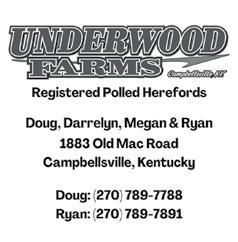
President: Anne Patton Schubert
Vice President: Tom McGinnis
Secretary/Treasurer: Shayna Gibson
BOYD BEEF CATTLE
6077 Helena Road
Mayslick, KY 41055
Charlie Boyd II: (606) 584-5194
Blake Boyd: (606) 375-3718 www.boydbeef.com cboyd2@maysvilleky.net
BURTON & SONS ANGUS
Joe D. or Karen Burton

927 Old Liberty Pike • Hustonville, KY 40437 (859) 238-0771 • www.branchviewangus.com
James S. & LuAnn Coffey, Donald & Donna Coffey
Annual Production Sale- 2nd Saturday in April

480 Hominy Hill Rd. Nancy, KY 42544
Joe: (606) 305-3081
Located 15 miles West of Somerset • klburton01@windstream.net
Bulls & females sold private treaty. Inquiries Welcome. Sell only what we would buy. Data driven since 1981.
FALL CREEK ANGUS
448 Corder Farm Road
Monticello, KY 42633
Ronnie Corder (606) 348-6588
HILL VIEW FARMS
Jimmy Gilles
5160 Lee Rudy Road Owensboro, KY 42301 (270) 929-5370 jcgilles86@gmail.com
APS ANGUS
4040 Taylorsville Rd
Taylorsville, KY 40071
Gordon Schubert
502-477-2637 • 502-548-8440
Anne Patton Schubert 502-477-2663 • 502-548-2359
TWIN CREEK FARM
HILL VIEW FARMS

(606) 375-3718
Shawn, Melissa, Devin & Dylan Gibson (270) 337-3072 or (270) 692-5304 Dennis & Emily 270/337-2128 or 270/402-4338

Jimmy Gilles 5160 Lee Rudy Road Owensboro, KY 42301 (270) 929-5370 jcgilles86@gmail.com

JOHNSON FARMS ANGUS Angus Bulls & Females Slaughters, KY
Keith: (270) 635-0723 Reese: (270) 635-1137
LYNN CREEK FARMS
S. & LuAnn Coffey, Donald & Donna Coffey Annual Production Sale- 2nd Saturday in April JOHNSON
COFFEY ANGUS FARMS 661 Hopewell Road Liberty, KY 42539
Matt Coffey: (270) 799-6288
Dewey Coffey: (606) 706-2699
Genetics for Maximum Profitability since 1984
GREAT MEADOWS ANGUS ASSOCIATION
Dale Brown, President
292 Pea Ridge Road Stamping Ground, KY 40439 859-940-8437 www.greatmeadowsangus.com
661 Hopewell Road Liberty, KY 42539 Matt Coffey: (270) 799-6288

BURKS CATTLE CO. 531 Rick Rd. Park City, KY 42160
(270) 635-0723
Eddie Burks • (270) 991-6398 www.burkscattle.com



SALES: 3rd Saturday in October • 4th Saturday in April
Dewey Coffey: (606) 706-2699
Genetics for Maximum Profitability since 1984
DAVIS BEND FARMS
LYNN CREEK FARMS
2315 Davis Bend Road Canmer, KY 42722
Kris and Sara Lynn 2184 Bardstown Rd Springfield KY 40069 573-721-6663
timmothyljeffries@gmail.com www.davisbendfarms.com
Tim: (270) 528-6605 • Leslie: (270) 528-6435

FALL CREEK ANGUS
SMITHLAND ANGUS FARM
448 Corder Farm Road Monticello, KY 42633
Ronnie Corder (606) 348-6588
4437 East Hwy 80 Russell Springs, KY 42642
Henry Bryan, Melissa, Bryanna and Blane Smith 606-271-7520 bmsmith@duo-county.com
HAMILTON ANGUS FARMS
Eddie Hamilton 2142 Stilesville Road Science Hill, KY 42553 edjohami@aol.com (606) 271-1286 Bulls and Females for Sale
PLEASANT HILL FARMS
PLEASANT HILL FARMS
HERITAGE FARM
Gil, Mary, Corbin, Caroline, and Catherine Cowles 500 Rockfield Richpond Road Rockfield, KY 42274 (270) 843-9021 • Fax (270) 843-9005

Gil, Mary, Corbin, Caroline, and Catherine Cowles 500 Rockfield Richpond Road Rockfield, KY 42274 (270) 843-9021 • Fax (270) 843-9005 Located 7 miles west of Bowling Green, 1/2 mile off Hwy 68/80
Tom McGinnis 1024 Hinkle Lane • Shelbyville, KY (502) 633-1634, home • (502) 633-5100, work (502) 655-0164, cell
TAMME VALLEY FARM
DUTCH CREEK ANGUS FORAGE GENETICS
Kris and Sara Lynn 2184 Bardstown Rd Springfield KY 40069 573-721-6663
Doug and Susan Schlosnagle (502) 706-0008 DutchCreekAngus.om
Bob, Kathy, Rob, and Janna Clark (859) 748-5558 1446 Kennedy Bridge Rd. Harrodsburg, KY 40330 Bob: (859)339-2610 • Rob: (859)612-1594 mtmoriahfarms1@gmail.com www.mtmoriahangus.com
HERITAGE FARM
Tom McGinnis
1024 Hinkle Lane • Shelbyville, KY (502) 633-1634, home (502) 633-5100, work (502) 655-0164, cell
FOUR KINGS ANGUS
250 Bright Leaf Dr. • Harrodsburg, KY 40330
Cary & Kim King
Carymking@yahoo.com • fourkingsangus.com

jacob.tamme@gmail.com www.tammevalley.com

TRIPLE D ANGUS
Cary Cell: (859) 613-3734 • Colby Myers - Purebred Manager
OLD BARK FARM
370 Ferrill Hill, Buffalo, KY 42716
(502) 905-7825
Nathaniel(Bub), Sarah, (606) 423-2457 • (606) tripledangus.com
Kenley Conner (270) 735-5324
Cattle
Registered Angus Cattle
TRIPLE D ANGUS
Nathaniel & Darla Denham

509-5401 whitefarm4@twc.com
Nathaniel(Bub), Sarah, Ashley Denham (606) 423-2457 • (606) 875-0780 tripledangus.com

Located 7 miles west of Bowling Green, 1/2 mile off Hwy 68/80
SMITHLAND ANGUS FARM 5202 East Hwy 80, Russell Springs, KY 42642 Charles “Bud” & Pam Smith: (270) 866-3898
Henry & Melissa Smith: (270) 866-2311
Jacob Tamme, Owner-Operator (859) 583-7134 jacob.tamme@gmail.com www.tammevalley.com & Find us on Facebook!

Return to: Shayna Gibson 1535 Fallen Timber Road New Castle, KY 40050 • Annual Dues $35
Kris and Sara Lynn 2184 Bardstown Rd Springfield KY 40069 573-721-6663 ST. CLAIR
CANNON ANGUS
Mary Jayne and Victoria Cannon 4619 Cherry Grove Rd Flemingsburg, KY 41041 606-748-5420 www.cannonangusfarm.com

Shayna Gibson, Secretary/Treasurer
www.kentuckyangus.org • kyangusassociation@gmail.com
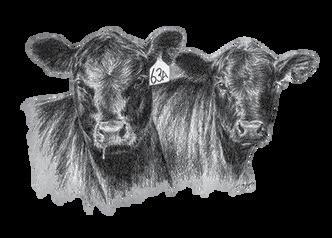
Join us for the Kentucky Angus Association Annual Banquet and Meeting, an evening dedicated to celebrating achievements and the passion of Angus Breeders. This special event will feature an awards ceremony recognizing the outstanding contributions of our juniors, who represent the future of the Angus industry. Attendees can look forward to a delicious meal accompanied by warm fellowship among the Angus community. It’s a wonderful opportunity to honor accomplishments, share experiences, and strengthen the bonds that unite our association. We are looking forward to having you!
Please contact Shayna Gibson to get your tickets purchased! Tickets are $25 each.

KEVIN AND RACHEL BARRON
Crestwood, Ky (502) 905-5851
rkbarron812@gmail.com

SWAIN SELECT SIMMENTAL 12113 Green Valley Dr. Louisville, KY 40243 swainselect.com swainselect@gmail.com facebook.com/swainselectsimmental

Fred & Phyllis: 502-599-4560 Chi & Angie: 502-287-2116

JUDY AND RONDAL DAWSON 1156 Buzzard Roost Road Shelbyville, KY 40065 502-593-5136 • jrdawson22@outlook.com

JEROD METZGER • 270-779-6260

ROCKING P LIVESTOCK 8308 Orangeburg Road Maysville, KY 41056
Chan: 606-584-7581
Keith: 606-584-5626
rockingplivestock@maysvilleky.net
BRIAN & HEATHER SWAIN 3906 Pottertown Road Murray, KY 42071 • 270-293-4440
wksbswain@murray-ky.net


SIMMENTAL AND SIMANGUS BULLS FOR SALE
1939 Huntertown Road
Versailles, KY 40383
BULLS FOR SALE
Chris Allen 859-351-4486 callenuky@hotmail.com
Dr. Henry Allen 859-229-0755


Modern-day ranching requires more information to produce better animals. International Genetic Solutions works across breeds to provide more accurate head-to-head comparisons and maximum profitability.
IGS incorporates generations of data and the world’s largest multi-breed database to enable more powerful breeding decisions than ever before.
Better cattle. Better profits.

BRET AND LAURA JACKSON 859.533.3718 or 859.707.7200
BRET & LAURA JACKSON Paris, Kentucky (859) 533-3718 (859) 707-7200
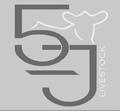
AA LAND & CATTLE
Daryl Derossett, President..................................................................................................................(270) 670-6232
Registered Gelbvieh & Balancers
Cynthiana, KY
LARRY CLARK & SONS LLC
Johnnie Moore, Vice President...........................................................................................................(270) 670-7814
Luke Arthur (859) 298-8323 luke.arthur93@gmail.com
Registered Gelbvieh Cattle
106 Clark Houk Road • Greensburg, KY 42743
Pat Tilghman, Secretary/Treasurer.......................................................................................................(270) 670-8449
Bulls • Show Prospects • Embryos Bulls sell with GE EPD’s • Show Prospects
BAR IV LIVESTOCK
Larry Clark, Owner & Operator (270) 299-5167 • (270) 405-6848
Lpclarkandsons@msn.com
Barry, Beth & Ben Racke • Brad Racke • 7416 Tippenhauer Rd. • Cold Spring, KY 41076 Phone (859) 635-3832 • Barry cell (859) 991-1992 • Brad cell (859) 393-3677 • Ben cell (859) 393-3730 Fax (859) 635-3832 • bar4@twc.com
Barry, Beth & Ben Racke • Brad Racke 7416 Tippenhauer Rd. • Cold Spring, KY 41076
Phone (859) 635-3832 • Barry cell (859) 991-1992
Brad cell (859) 393-3677 • Ben cell (859) 393-3730 Fax (859) 635-3832 • bar4@twc.com
Niles & Betty K Bray • 1568 Bray Ridge Road Bedford, KY 40006 • (502) 255-3584
BEE LICK GELBVIEHS
CD FARMS
Eddie Reynolds 277 Old Bee Lick Rd. Crab Orchard, KY 40419
606-379-2281(H) 606-305-1972(C)
Clayton & Debbie Cash 1214 Ottawa School Road • Brodhead, KY 40409 (606)-308-3247 • (606)-758-8994
Bulls & Females for sale

CLIFFORD FARMS
3459 KY HWY 1284E
Cynthiana, KY 41031
Since 1937 (859) 234-6956
BRIAN W. DYER, DVM
Owner/Manager
GELBVIEH/BALANCERS
2050 Glasgow Road Burkesville, KY 42717
Gelbvieh-Balancer Bulls & Heifers For Sale by Private Treaty
Owner/Manager
GELBVIEH/BALANCERS
2050 Glasgow Road • Burkesville, KY 42717
Brian, Lauren, Kristen Barry, Emily & Julia (270) 864-5909 FULL CIRCLE FARMS
Registered Gelbvieh Cattle
Brian, Lauren, Kristen Barry, Emily & Julia • (270) 864-5909
PLEASANT MEADOWS FARM
CD FARMS
Clayton & Debbie Cash 1214 Ottawa School Road Brodhead, KY 40409 (606)-308-3247 • (606)-758-8994
Brad Burke 989 Metcalf Mill Road • Ewing KY 41039 (H) 606-267-5609 • (C) 606-782-1367 gbb789@windstream.net
Gary & Pat Tilghman • Carrie & Daryl Derossett Family • Lindsey & Garland Gilliam Family 690 Lick Branch Road Glasgow, KY 42141 270.646.7024 • pleasantmeadowsfarm@hotmail.com Registered Gelbvieh & Angus cattle for sale
R&D OWEN FARMS
Gelbvieh-Balancer Bulls & Heifers For Sale by Private Treaty
AA LAND & CATTLE
East Bernstadt, KY 606-843-6583
cell 606-309-4662



Black Replacement Heifers & Bulls Available Embryo transplant & AI sired calves
GELBVIEH & BALANCERS PO Box 781 • Eddyville, KY 42038 (270) 601-6830 • rdowenfarms.com • sales@rdowenfarms.com
Registered Gelbvieh & Balancers Cynthiana, KY Luke Arthur (859) 298-8323 luke.arthur93@gmail.com
DONE WRIGHT CATTLE FARMS
LARRY CLARK & SONS LLC
MOCKINGBIRD HILL FARMS
Registered Gelbvieh Cattle
Registered Gelbvieh Cattle
106 Clark Houk Road • Greensburg, KY 42743
Bulls • Show Prospects • Embryos Bulls sell with GE EPD’s • Show Prospects
Casey Wright, Owner 2665 Poplar Corner Road • Lebanon, Kentucky 40033 270-692-7496 * donewrightcattle@hotmail.com
Saturday May 15
Kentucky Junior Gelbvieh Show & Learning Clinic
ASHWOOD SPRING GENETICS
BAR IV LIVESTOCK
McIntosh Brothers Farm • 3348 Frankfort Road • Georgetown 10AM Learning Clinic • 12:30PM Show
Shane Wells 10172 Provo Rd. Rochester, KY H: 270-934-2198 C: 270-791-8196 swells@logantele.com
Larry Clark, Owner & Operator (270) 299-5167 • (270) 405-6848 Lpclarkandsons@msn.com


S&S GELBVIEH
Barry, Beth & Ben Racke • Brad Racke 7416 Tippenhauer Rd. • Cold Spring, KY 41076 Phone (859) 635-3832 • Barry cell (859) 991-1992 Brad cell (859) 393-3677 • Ben cell (859) 393-3730 Fax (859) 635-3832 • bar4@twc.com
BREEDING RED & BLACK POLLED GELBVIEH SINCE 1982
Call William McIntosh for more information. (502) 867-3132
Luke & Lindsay Arthur Cynthiana, KY 859-298-8323
CLIFFORD FARMS 3459 KY HWY 1284E Cynthiana, KY 41031
BRIAN W. DYER, DVM Owner/Manager GELBVIEH/BALANCERS 2050 Glasgow Road Burkesville, KY 42717
David, Jerri & Jon David: 162 Hastings Ln • Fredonia, KY 42411 (270) 556-4259 Arthur & Joyce Slaughter 19068 Marion Rd • Fredonia, KY 42411 (270)545-3455
Friday May 28 - May 30
AGJA Eastern Regional Junior Show “Run for the Roses” Burley Fields Livestock Center • 709 Oil Fields Road • Horse Cave
Cattle for sale at all times.
Since 1937 (859) 234-6956
Brian, Lauren, Kristen Barry, Emily & Julia (270) 864-5909

FULL CIRCLE FARMS REGISTERED GELBVIEH CATTLE
BAR IV LIVESTOCK
BEE LICK GELBVIEHS
FULL CIRCLE FARMS
BRIAN W. DYER, DVM
Eddie Reynolds
Call Carrie Derossett for more information. (270) 404-0828
277 Old Bee Lick Rd. Crab Orchard, KY 40419
Brad Burke: 989 Metcalfe Mill Rd, Ewing, KY 41039 (H) 606-267-5609 (C) 606-782-1367 gbb789@windstream.net
Entry and room information available at www.gelbvieh.org (Juniors/Regional Shows/AGJA Eastern Regional)
606-379-2281(H) 606-305-1972(C)
Barry, Beth & Ben Racke • Brad Racke 7416 Tippenhauer Rd. • Cold Spring, KY 41076 Phone (859) 635-3832 • Barry cell (859) 991-1992 Brad cell (859) 393-3677 • Ben cell (859) 393-3730 Fax (859) 635-3832 • bar4@twc.com
Registered Gelbvieh Cattle
Owner/Manager
PLEASANT MEADOWS FARM

GELBVIEH/BALANCERS 2050 Glasgow Road Burkesville, KY 42717
Gary & Pat Tilghman Lindsey Tilghman Jones Family
HEDGESPETH LIVESTOCK GELBVIEH/BALANCER CATTLE-COMMERCIAL HEIFERS
Bulls & Females for sale
Brad Burke 989 Metcalf Mill Road • Ewing KY 41039 (H) 606-267-5609 • (C) 606-782-1367 gbb789@windstream.net
543 Pleasant Run Church Road • Campbellsville, KY 42718 sam.hedgespeth@gmail.com • Sam-270.299.5449 Seth-270.932.1615 Dan-606.686.1679 Andrew-270.405.1990
BEE LICK GELBVIEHS
Eddie Reynolds
277 Old Bee Lick Rd.
Crab Orchard, KY 40419
606-379-2281(H) 606-305-1972(C)
Bulls & Females for sale
GELBVIEH BULLS & FEMALES FOR SALE 1012 Shelby Road • Salem, KY 42078 Thad Padon (270) 836-5518
BRAY’S GELBVIEH CATTLE
Niles & Betty K Bray
Brian, Lauren, Kristen Barry, Emily & Julia (270) 864-5909
Carrie & Daryl Derossett Family 690 Lick Branch Road Glasgow, KY 42141 270.646.7024 • pleasantmeadowsfarm@hotmail.

FULL CIRCLE FARMS
RICH HILL GELBVIEH
Registered Gelbvieh Cattle
Frank McAninch 1341 Iven Godby Road Liberty, KY 42539
Brad Burke 989 Metcalf Mill Road • Ewing KY 41039 (H) 606-267-5609 • (C) 606-782-1367 gbb789@windstream.net
606-787-0120 richhillfarm@windstream.net

SAVE THE DATES: Friday May 23 through Sunday May 25 is the Eastern Regional and Kentucky State Show. Watch for more information coming soon!
1568 Bray Ridge Road Bedford, KY 40006 (502) 255-3584
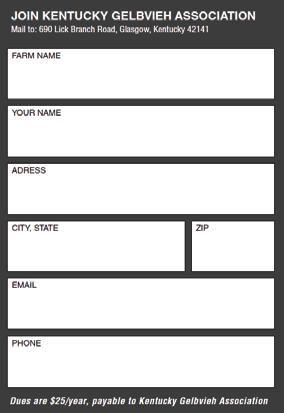
APR
APR
APR
APR
APR
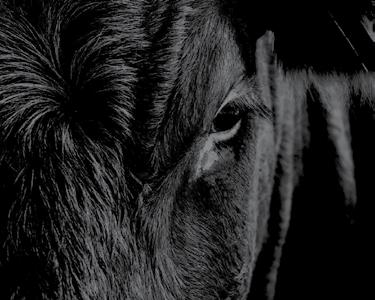
* FREE DELIVERY *
FOUR WINDS
PERFORMANCE TESTED PUREBRED ANGUS BULLS FOR SALE Call 270-202-7186 for more info or check out www.oakhollowangus.com for current availability.
POLLED HERFORD BULLS FOR SALE
19–20-month-old Polled Hereford bulls. Good selection. Low birthweight, medium frame. Free Delivery Available. JMS Polled Herefords, Knifley, KY Danny 270-566-2694 Trent 270566-2000
THE FOUNDATION SALE XI Sat. Sept. 20, 2025 1 Pm Ct. United Producers, Bowling Green,Ky Limousin Fullblood, Purebreed, Limflex. For Info. Call Stephen Haynes 270-799-8685 Or 270-799-8684
DIAMOND J SALERS
Donald Johnson • 11660 N. Hwy 1247 • Eubank, KY 42564 606-379-1558
DIAMOND J SALERS
WILLIS FARMS
Donald Johnson • 11660 N. Hwy 1247 • Eubank, KY 42564 606-305-8747
Danny Willis • 964 Johnson Rd • Frankfort, KY 40601 • 502-803-5011 drwc21@aol.com • Purebred + Optimizer Breeding bulls & Heifers for sale.
DEL-SU FARM
WILLIS FARMS
Howard & Sue Edwards • 420 Rose Rd • Somerset, KY 42501 606-679-1675 • Jeriah Privett • 606-416-1154
Danny Willis • 964 Johnson Rd • Frankfort, KY 40601 502-803-5011 • drwc21@aol.com
KNOB LICK FARM - BULLS & HEIFERS FOR SALE
Larry Cox • Tina Cox-Lynch • Amanda Cox Gibson • 1315 Knob Lick Road • Irvine, KY 40336 • 606-723-3077 • 606-975-1716
REGISTERED BLACK SIMMENTAL BULLS
Many blaze faced. Excellent EPD’s. Semen Tested. Delivery Available. Maximize your profit with proven performance. All bulls qualify for new CAIP cost-share. Adam Wheatley 502349-2665
BREEDING AGE HEREFORD BULLS FOR SALE AT ALL TIMES Over 60 years of Line 1 Hereford Genetics. Groups of open and bred heifers available for sale at all times. Chambliss Hereford Farms. 270-668-7126
RED ANGUS, SIMANGUS, CHAROLAIS, ANGUS FOR SALE Red Hill Farms, Lafayette, TN, 615-666-3098 Bart, Sarah and Ty Jones Gordon and Susan Jones, 270-991-2663 Visit us online - www.RedHillFarms.net
Contact us for cattle and semen availability. Annual Production Sales: More Than a Bull Sale – 3rd Saturday in March • Maternal Monday – 3rd Monday in May • Bulls & Females of Fall Sale – Last Saturday in October
REGISTERED ANGUS BULLS
Some 2 years in February; also February yearlings • Semen checked, birth weights and EPDS • Calving Ease & Growth, BQA Metropolis, IL, 618-6387693, www.bremerbrothers.com
HEREFORD (AHA) AND BLACK HEREFORD (ABHA) COWS Ages 5+ bred to Black Hereford bulls. Vet-checked and expected to calve AprilMay 2025. These are low-maintenance, highlongevity cows. Delivery available in the area.
Sweet T Farm, Cynthiana, KY 859-684-1509
Rental- on commercial manure spreaders
Truck mount meyer 700- twin screw on a truck
TMR mixers- parts in stock
Meyer 4516 forage box- $$$$
Tubs- rims/ tires- knives- planetary fluids
S B 200 Artex manure spreader- $39,000
Meyer and Cloverdale TMR mixers in stock
Zero down $$$$ for 11 months
Kubota 90 skid lo
Esch 12 ft drill $$$$$ drill time
Meyer 4618- silage wagon-super clean $26,500
JD 567- string -$19,995
New Holland BR 7060-string - $11,995
Farmco feeders- in stock
JD 5420- 4wd canopy- loader $26,500
JD 6715- 2wd canopy- 16 PS- $$$$ CALL CHARLIE FOR A HOT DEAL TODAY!!!! 859-608-9745

Extension Specialist,
Do you “sell” your calves, or do you “market” your calves? With cattle prices at record levels, the difference between the two doesn’t seem to really matter that much, or does it? We are in unprecedented times in the cattle industry. Beef cow inventory is as low as it’s been since many of us were born. Carcass weights are at record highs, and input costs continue to rise. With light weight calves hitting $4 cwt it’s hard to argue against the mindset of load them up and haul them off, but I think we need be careful to not let these good times change our mindset. We are fortunate in Kentucky to have an excellent Market News division at the Kentucky Department of Agriculture, and lately I have poured over numerous KDA market reports working on PVAP closeouts. I thought I would share some of what I found. Table 1 shows the number of steers and bulls by weight (300-699 lbs.) and grade, large and medium frame, muscle score 1-2 (LM 1-2) vs large and medium frame, muscle score 2-3 (LM 2-3) as reported by the KDA Market News reporters for the week of Dec. 8-14. I chose to summarize this particular report since it represents one of the largest marketing weeks in 2024 (24,085 feeder cattle). Note that 34% of the calves weighing 300-699 lbs. were bulls. This ranged from 60% for 3 wt. calves to 20% in the 6 wt. category. If you calculate the number of LM 2-3 calves, both steers and bull, you will see that 892 calves out of 7,413 (12%) failed to have the muscling and quality to make the LM 1-2 grade. So how does this affect price?
Table 2 gives the corresponding weighted average prices ($/cwt.) reported in that same week. Discounts for bulls vs. steers of similar quality (LM1-2) ranged from -$14.41 for 3 wt. calves to -$30.18 for 6 wt. calves. More severe discounts were reported for LM 2-3 steers and bulls with a range of -$30.34 for 6 wt. LM 2-3 steers to a high of -$75.15 for 3 wt. LM 2-3 bulls. This means that 40% of calves weighing between 300 and 699 lbs. experienced discounts ranging from $14 to upwards of $50 plus per cwt. Per head discounts on a 500 lb. calf ranged from $125 per head for selling a LM 1-2 bull up to $283 per head for selling a lower quality light muscled LM 2-3 bull. For the average 25-30 cow Kentucky cow herd, this could easily total $2,000 or more of lost revenue. The good news is these discounts can be avoided by simply castrating calves and using quality bulls with adequate muscling. The common argument against castration is added weight at weaning and the risk involved. Both of these concerns can be alleviated by castrating early (less than 3 months of age) and implanting. Early castration is easier on the calf and the person doing the castrating. Also, research has shown that early castration coupled with one growth promoting
implant will result in similar weight at weaning as if the calf had been left intact.So, what is the difference between “selling” and “marketing”? If the first step of marketing is avoiding discounts, maybe the second step is adding value. Weaned preconditioned calves continue to be in demand and the best place for a calf to be castrated and weaned is on the farm where it was born, and buyers recognize that. The Advanced Post Weaning Value-Added Program (PVAP) helps producers determine the profitability of weaning and preconditioning their calves prior to marketing. Calves must be weighed at weaning to determine the beginning value of the calves, and expenses are recorded throughout the preconditioning period. When calves are sold, a one-page closeout detailing costs and returns and performance of the calves is provided to the participant. Table 3 is a summary of closeouts from the PVAP program during the marketing year April 2024 to January 2025. This summary contains the 25 closeouts that have been completed. Note that 2024 was a historically profitable year for preconditioning calves. Net added value per head averaged $216 vs selling the calf at weaning. Returns this fall were even
Notes:
net value of the calves sold as listed on the sale check stub. Health Costs: Includes cost of vaccines, dewormers, sale tags, prostaglandin, etc. necessary for preconditioning program. (2024 Average = 15.70/hd) Ration Costs: Includes cost of feed, forage and mineral during the preconditioning period. (2024 Average = 126.76/hd) Interest: Interest rate of 6% was charged on the weaned value of the calf for the length of the preconditioning period. (2024 Average = 17.15/hd) Death Loss: A 0.5% death loss was assumed. This low rate was chosen since these are low risk home raised calves. (2024 Average = $6.82/hd) Price vs State: Weighted average sale price of preconditioned calves compared to the state average of non-value added calves sold the same week. (2024 Average = +7.01/cwt) Net Added Value: Sale Value - (Wean Value + Health Costs + Total Feed Costs + Interest + Death Loss)
Table 3. Summary of Advanced PVAP Closeouts (April 2024 - January 2025)
higher, averaging $278 per head with several closeouts in the $300 plus range. Think about the “sellers” who sold their intact bawling bull calves straight off the cow in October vs the “marketers” who weaned their steer calves in October and preconditioned and marketed them in December. Market data and PVAP results from this fall indicate a potential $403 ($125 + $278) per head revenue
advantage to the “marketer.” Which for a typical 25 cow herd could have totaled an additional $4,000, and this does not include added revenue for preconditioned heifers.
There are several other strategies that can enhance value and help you “market” your calves. Managing a tighter calving window will result in larger lot sizes. Upgrading
• Watch cows and calves closely. Work hard to save every calf. Calves can be identified with an ear tag while they are young and easy to handle. Commercial male calves should be castrated and implanted. Registered calves should be weighed at birth.
• Cows that have calved need to have adequate nutrition to rebreed. Increase their feed after calving. Do not let them lose body condition. Keep feeding them until pastures are adequate.
• Do not “rush to grass,” although it can be really tempting. Be sure that grass has accumulated enough growth to support the cow’s nutritional needs before depending solely upon it. Cows may walk the pastures looking for green grass instead of eating dry feed. This lush, watery grass is not adequate to support them. Keep them consuming dry feed until sufficient grass is available to sustain body condition. We’ve spent too much money keeping them in good condition to lose it now!
• Prevent grass tetany! Provide magnesium in the mineral mix until daytime temperatures are consistently above 60oF. Mineral supplement should always be available and contain a minimum of about 14% magnesium. Make sure that your mineral mix also contains adequate selenium, copper and zinc. You can ask your feed dealer about the UK Beef IRM High Magnesium Mineral.
• Make final selection of heifer replacements. Strongly consider vaccinating with a modified-live BVD vaccine.
• Purchase replacement bulls at least 30 days before the breeding season starts. Have herd bulls evaluated for breeding soundness (10-20% of bulls are questionable or unsatisfactory breeders). Get all bulls in proper condition (BCS 6) for breeding.
• If you are going to use artificial insemination and/or estrous synchronization, make plans now and order needed supplies, semen and schedule a technician.
• Prebreeding or "turnout" working is usually scheduled for late April or May between the end of calving season and before the start of the breeding season (while cows are open). Consult your veterinarian about vaccines and health products your herd needs. Decide now on the products needed and have handling facilities in good working order. Dehorn commercial calves before going to pasture.
genetics with breeders who offer buy back programs or special sales. Participating in stockyard precondition sales. Group selling with other producers with similar cattle and program. Whatever strategies you use, remember these prices won’t last forever so use your profits wisely to position yourself to be a “marketer” and not just a “seller.”
• Determine pregnancy in your herd now and cull open ones at weaning, especially if the open cows are older than 6 years of age.
• Re-implant feeders.
• Consult with your veterinarian about pre-weaning working of the herd.
• You may let calves creep-graze wheat or rye if it is available. Calves will benefit from extra feed until spring grass appears.
• Plan marketing strategy for feeder calves.
• Do not go to pastures too soon, give plants some growing time. Then stock at two to three times the July rate and rotate rapidly.
• "Condition" purchased calves prior to grazing. They should be processed and fed a conditioning diet prior to being placed on pasture. You can also use this time to introduce them to electric fences used in rotational grazing.
• Provide a good mineral supplement which contains a rumen modifier (Rumensin, Bovatec, etc.) along with adequate levels of copper and selenium.
General
• We have made a muddy mess this winter, so be prepared to reseed bare spots. Our forage group has some excellent information on restoring heavytraffic areas.
• Make plans to improve hay feeding areas to avoid muddy conditions like we have faced this winter. Consider geotextile fabric with gravel or concrete feeding pads.
• Prepare for the grazing season. Check fences and make necessary repairs. Check your corral, too.
• Get everything ready to make high quality hay in May! Have equipment serviced and spare parts on hand. Order baler twine now. Be prepared to harvest an adequate supply of hay when you have the opportunity. Resupply the extra hay that you fed out of the barn. This past winter caused most producers to exhaust their hay supply, so it is time to re-stock.
• Plan now for fly control. Decide what fly control program that you will use but do not put insecticide ear tags on cattle until flies appear.
Generally the Buyer is responsible for collecting the Beef Checkoff assessment from the Seller

However, both the Buyer and the Seller are responsible for seeing that the Checkoff is collected and paid. or pays $2 to
QUALIFIED STATE BEEF COUNCIL
Cattlemen’s Beef Board invests in national Checkoff programs, while Kentucky Beef Council invests in state programs.
If you are a producer from one of these seven states - Alaska, Connecticut, Maine, Maryland, Massachusetts, New Hampshire, and Rhode Island - you will remit directly to the Cattlemen’s Beef Board. If you have any questions regarding who is responsible for remitting the Checkoff assessment or how to remit payment, please contact your State Beef Council or the Cattlemen’s Beef Board at (303) 867-6304.
3 Exceptions to Beef Checkoff Collection: 1. Non-producer status: If a person (or company) owns cattle for 10 days or less, purchases the cattle to facilitate the transfer of ownership to a third party, and certifies that any Checkoff dollars due from the previous owner have been collected, then that person qualifies as a “Non-Producer” and the Checkoff assessment is not due when qualified cattle are resold. 2. Organic Exemption: In the 2002 Farm Bill, Congress created a process exemptiing organic producers from paying Checkoff program assessments. 3. Pre-Payment: Producers can also choose to “prepay” the Checkoff assessment when shipping cattle out of state for feeding and still retain ownership on the cattle. This allows the producer to direct half of the $1-per-head national Checkoff assessment to the beef council in the state where the cattle were raised, rather than the state where the cattle will be fed. Note: To claim any of these exemptions, the person selling the cattle must provide the proper ‘document’ to show that the Checkoff assessment is not due at the time of sale. Thus, the rule of thumb for all cattle sales is that the person paying the producer should collect either a “Dollar or a Document.”
LIVESTOCK MARKET - When cattle are sold through a livestock market or video market, the Market collects and remits the Beef Checkoff assessment.
CATTLE DEALER/ORDER BUYER - When cattle are sold to a Cattle Dealer or Order Buyer, the Dealer/Order Buyer collects and remits the Beef Checkoff assessment.
ANOTHER PRODUCER - Both the Buyer and the Seller are responsible for making sure that the Beef Checkoff assessment is collected and remitted. For clarity and consistency, we encourage the Seller to take on this compliance responsibility.
VEAL GROWER - When dairy calves are sold to a Veal Grower, both the Buyer and the Seller are responsible for making sure that the Beef Checkoff assessment is collected and remitted. For clarity and consistency, we encourage the Seller to take on this compliance responsibility.
CATTLE SHOWS AND FAIRS - When producers sell their animals at fairs or cattle shows (4H/FFA shows, Purebred cattle shows, etc.), the Organization that runs the sale collects and remits the Beef Checkoff assessment.
FEEDLOT - When cattle are sold directy to a feedlot, the Feedlot collects and remits the Beef Checkoff assessment.
PACKING PLANT - When cattle are sold to a packing plant, the Packing Plant collects and remits the Beef Checkoff assessment.
DIRECT-TO-CONSUMER BEEF SALES - When producers market their cattle as beef, the Producer is responsible for remitting the Beef Checkoff assessment.
it
control
OMB control
The
for this
collection is 0581-0093. The time required to complete this
collection is estimated to
per response, including the
one
for reviewing instructions, searching existing data sources, gathering and
the
and completing and reviewing the
of
The U.S. Department of Agriculture (USDA) prohibits discrimination in all its programs and activities on the basis of race, color, national origin, age, disability, and where applicable, sex, marital status, familial status, parental status, religion, sexual orientation, genetic information, political beliefs, reprisal, or because all or part of an individual’s income is derived from any public assistance program. (Not all prohibited bases apply to all programs.) Persons with disabilities who require alternative means for communication of program information (Braille, large print, audiotape, etc.) should contact USDA’s TARGET Center at (202) 720-2600 (voice and TDD). To file a complaint of discrimination, write to USDA, Director, Office of Civil
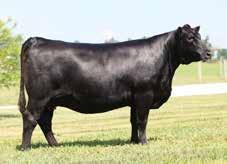

The dominating female is back. Embryos by Kingston, an Elite daughter by Heat Seeker21026464, and Saluda Embryos from her $22,000 maternal sister-20033304.

A rare beast with the look of a future Donor! Dam was the high selling female in the Fall GMAA and Grandam is the prolific Baldridge Isabel D753!


Confidence Plus out of the iconic Erica of Ellston T220. 2 fall open donor prospects sell- 21079599, 21079598, by the $300,000 Rise Above. Also embryos from her maternal sister, 20618911 and Heisman sell.





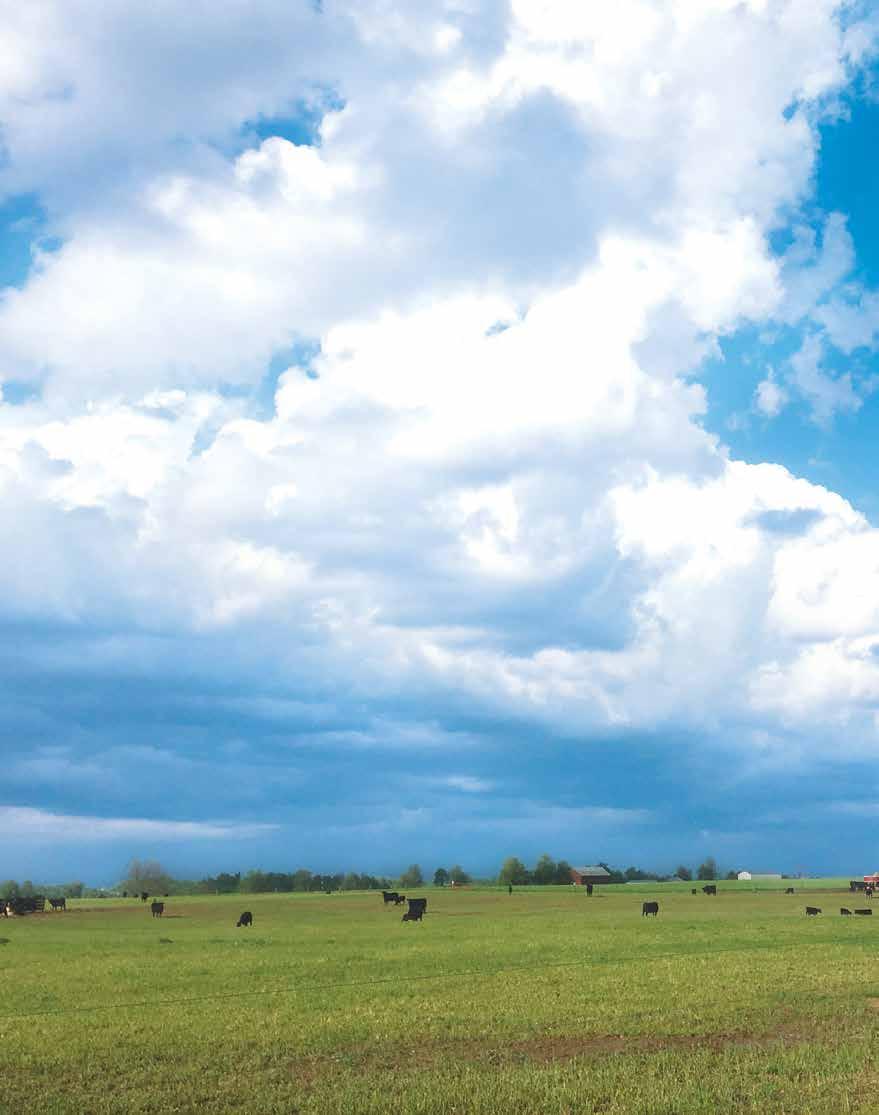
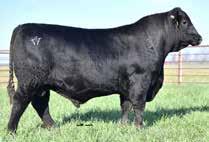
• Son of the ST Genetics sire, Poss Winchester. Dam maintains a calving interval of 5/368 with progeny ratios of WW 4/109, YW 4/112, IMF 4/124, RE 4/100.
• Moderate BW with explosive growth: top 4% WW, 2% YW. 3569 checked all the performance boxes with ratios of WW 124, YW 127, IMF 144, RE 102, ADG 128.

• Son of the ST Genetics sire, Connealy Commerce. Dam maintains a calving interval of 3/366 with progeny ratios of WW 2/119, YW 2/113, RE 2/111.
• Sleep all night calving ease with top 15% WW, 20% YW.
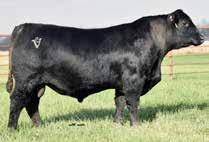
• Son of the ST Genetics sire, KCF Bennett Exponential.
• Double digit CE with top 10% WW and 15% YW.
• Pathfinder dam maintains a calving interval of 6/372 with progeny ratios of WW 5/109, YW 5/103, IMF 13/103, RE 13/102.
BV Craftsman 3592 |Reg# 20907169
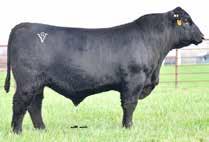
• Son of the ST Genetics sire, Connealy Craftsman.
• Moderate BW with top of breed growth: top 1% WW and 2% YW. Solid set of indexes: 2% $W, 15% $C, 20% $B, $G, 30% $F.
• 1595 posted an 898 WW with a dominate set of performance ratios: WW 131, YW 124, IMF 113, RE 104.